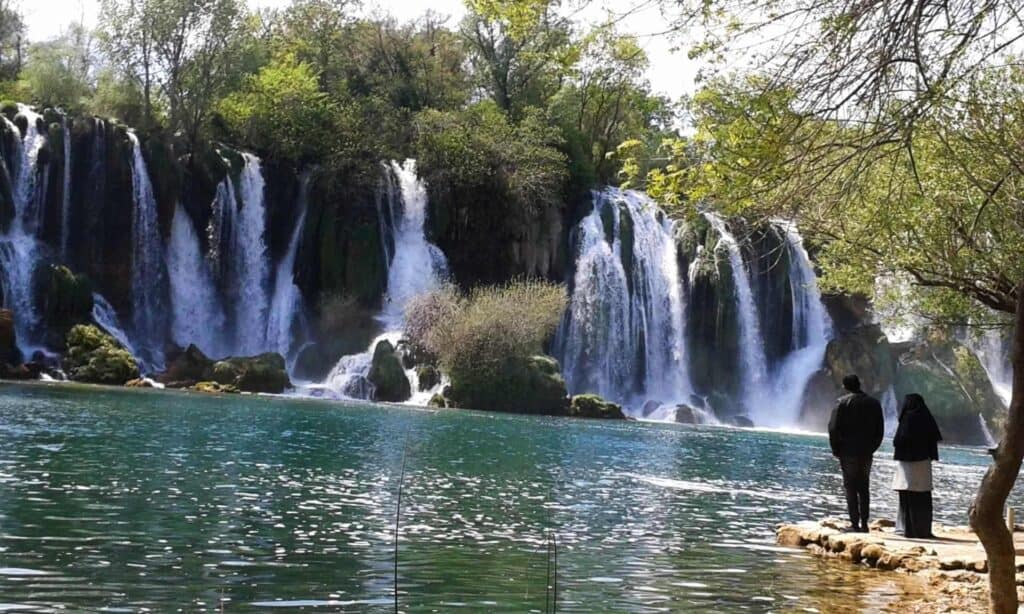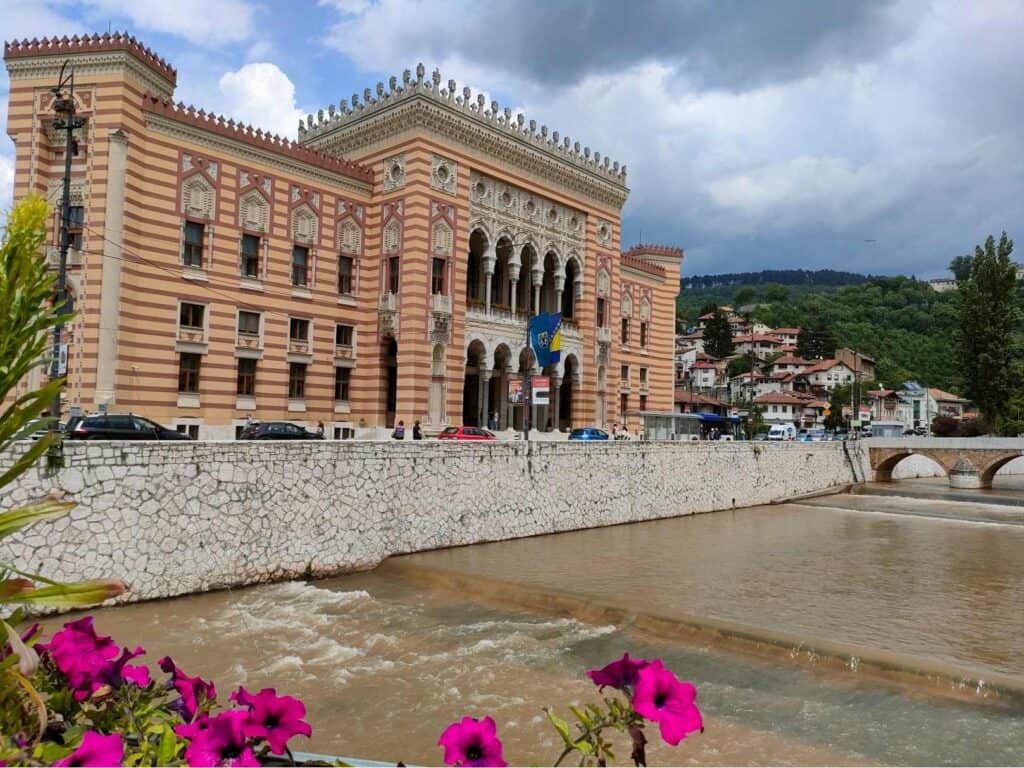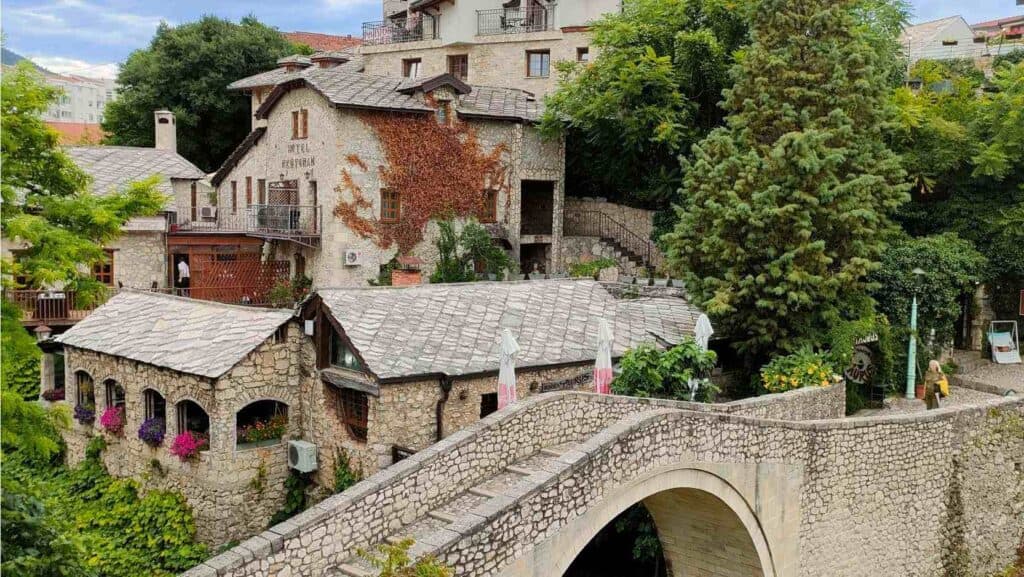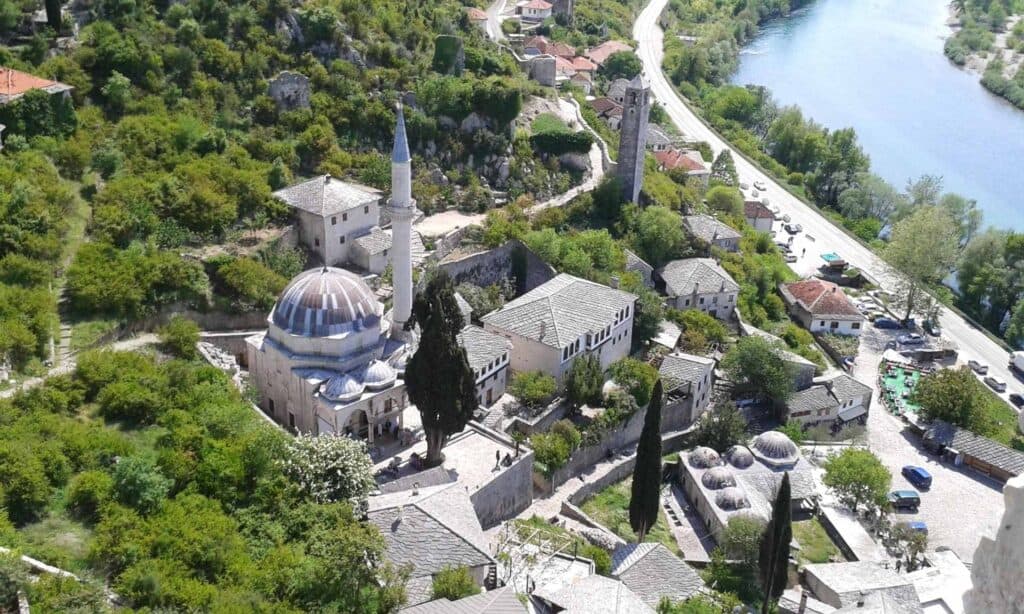This article may contain affiliate / compensated links. For full information, please see our disclaimer here.
Are you planning to travel around Bosnia and Herzegovina, or you combine it with other countries in the Balkan? While Mostar and Sarajevo sound familiar to everyone, there is so much more to see in this country that has an amazing landscape with rivers, lakes, forested mountains, canyons and a fascinating cultural diversity with mosques, orthodox and catholic churches standing next to each other. Whether you make a road trip or you are backpacking, in this travel guide, you find the must-knows before visiting the country, from culture to history, travel tips, and an ideal itinerary for 4 days, 5 days, and one week in Bosnia and Herzegovina.
- How to get to Bosnia?
- When is the best time to go to Bosnia Herzegovina?
- Ethnicity and religion
- How to dress up in Bosnia Herzegovina?
- Prices in Bosnia and Herzegovina
- What to eat in Bosnia and Herzegovina?
- Backpacking in Bosnia and Herzegovina – How to get around with public transport
- Is Bosnia and Hercegovina safe to visit?
- How to plan your trip to Bosnia and Herzegovina
- The Bosnian war (1992-1995)
- What to visit in Bosnia in 4 days?
- What to visit in Bosnia in 5 days?
- What to visit in Bosnia in 7 days?
- Bosnia 10 days itinerary
- Sarajevo, the capital
- Konjic, Tito's bunker
- Mostar
- Travnik
- Višegrad
- Jajce and Pliva waterfalls
- Banja Luka
- Ramsko Lake
- Trebinje
- Neum, the only coastal city of Bosnia-Herzegovina
- Srebrenica – Potočari memorial site
- Other articles about Bosnia and Herzegovina
- Other posts about Bosnia and Herzegovina
How to get to Bosnia?
By flight: several airlines (Ryanair, Wizzair, Pegasus, Eurowings) fly to Bosnia and Herzegovina. Sarajevo has the biggest airport, but Mostar, Tuzla, and Banja Luke also accept some international flights, which tend to be much cheaper.
By bus: Several buses are from Germany, Austria, Croatia (Dubrovnik, Split, Zagreb), and Serbia (Belgrade).
Check the schedule within Bosnia and the international bus connection here.
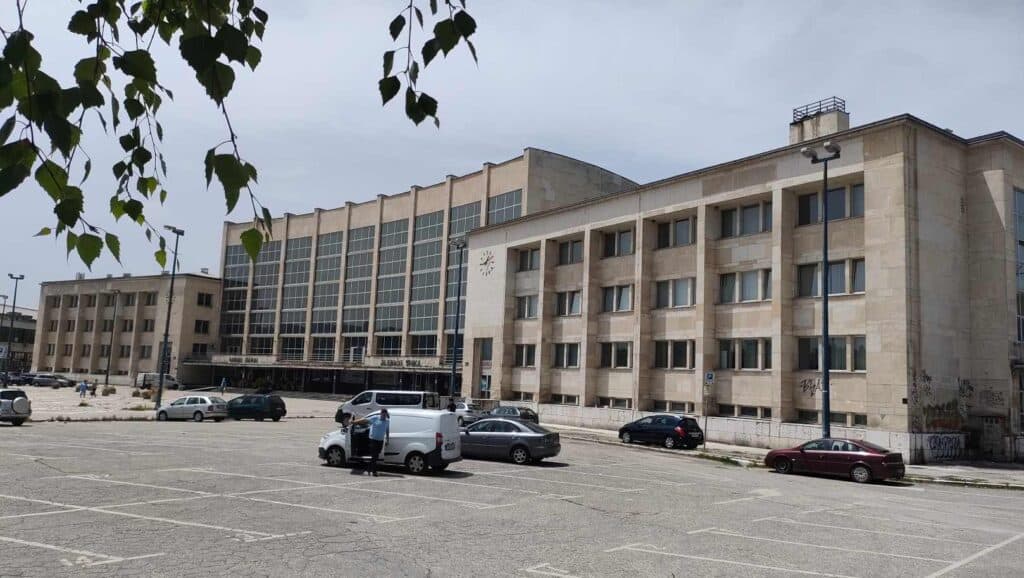
When is the best time to go to Bosnia Herzegovina?
The Dinaric Alps divide the country into two distinct regions: Bosnia and Herzegovina. The Bosnian part with Sarajevo is cooler, while Hercegovina enjoys a Mediterranean climate with less rain, more sunshine, and higher temperature.
In Bosnia, winters can be freezing. Sarajevo’s Bjelašnica, Igman, and Jahorina mountains, where the Winter Olympic Games were held in 1984, are an ideal destination for skiing from January through to March. However, it is not the best time for a cultural trip, although Herzegovina experiences little snow and has mild winters. Summers can be hot throughout the country, especially in Hercegovina, but during this time, cities are bustling, and the terraces are filled with locals and tourists.
May-June and September-October are outside the peak season with pleasant temperatures if you plan a culture trip with lower prices and fewer visitors. However, if you want to swim in the Mediterranean Sea, you should go during summer.
Ultimate travel guide to Mostar
Sarajevo itinerary one day, 2 days, 3 days
Ethnicity and religion
This is a sensitive point in Bosnia Herzegovina, as the war deepened the division of the society, although Serbs, Croats, and Bosniaks lived peacefully together and intermarried for hundreds of years.
According to the 2013 census, the different ethnic groups in the country are as follows: Bosniak 50%, Bosnian Serbs 30.78%, Bosnian Croats 15.43%, and others 2.73%.
The three main ethnic groups were defined in the early twentieth century when Croatia and Serbia wanted to extend their borders. Using nationalist rhetoric, Croatians classified Bosnian Catholics as Croats and Bosnian Serbs as Orthodox.
The fact that the Serbs are Orthodox and the Croats are Catholics results from a historical accident. Emperor Theodosius, who ruled the eastern half of the Roman Empire, decreed in 380 that his subjects would be Christians. The language of the Byzantine church was Greek, while that of the Roman church was Latin. When the empire was definitively split in 395, the line of division in Europe ran south along the Drina River. Modern Croatia and Bosnia lay to its west, while the regions of modern Serbia and Macedonia to its east.
Until the 1960s, Serbs were the largest of its three communities in Bosnia.
In Bosnia, religion is most often linked to ethnicity. But not all Muslims consider themselves Bosniak. Bosnian Muslims follow a less strict version of Islam and are very relaxed about how to practice religion. Some are not even too religious, as during Yugoslav times, socialism promoted secularism, and it was not allowed to practice religion publicly.
How to dress up in Bosnia Herzegovina?
Even though a large percentage of the population is Muslim, there isn’t a strict dress code, and you will see women wearing jeans and shirts while others cover their hair with a scarf and wear modest cloth. Those who wear a chador and cover their face are tourists from the Middle East.
Prices in Bosnia and Herzegovina
Summer is the primary tourist season when prices increase, but Bosnia and Herzegovina is still an affordable travel destination in Europe.
Here are some examples of the prices:
Low-budget private rooms with bathroom: 25-25 EUR
Ƈevapi, the most popular dish: 9-10 KM (4-5 EUR)
Coffee: 2-3KM (1-1.5 EUR)
Entrance fees: 3KM-20KM (1.5 EUR – 10EUR)
Tran ticket Mostar-Sarajevo: 14KM (7 EUR)
Bus ticket Mostar – Sarajevo: 28KM (14 EUR)
Taxi inside Sarajevo: 20KM (10 EUR)
What to eat in Bosnia and Herzegovina?
The national cuisine is a mix of Turkish, Central European, and Southern Slavic.
You must try the traditional pitta dishes of burek, zeljanica (spinach and cheese), sirnica (homemade cheese), and krompiruša (with potato) for breakfast.
Ćevapi is the national dish of Bosnia and Herzegovina, a mix of small lamb and beef sausages. They are usually served with fresh onions and pitta bread on the side. You can choose to get five or ten pieces.
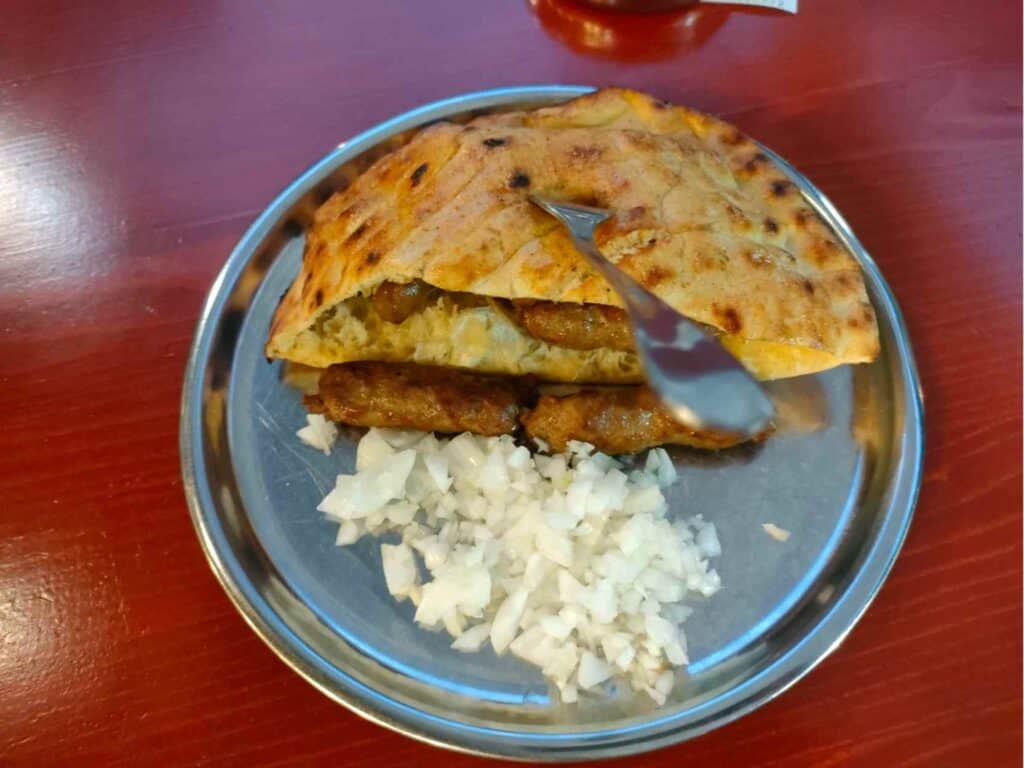
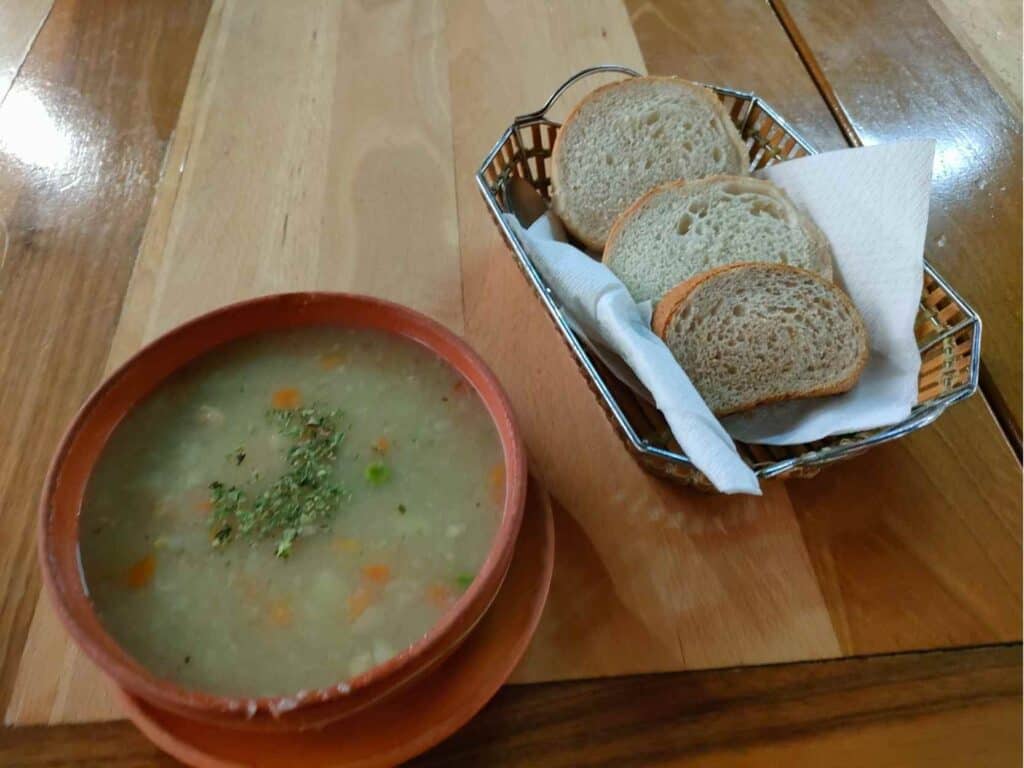
Sogan dolma: Fried onions stuffed with minced meat.
Begova čorba: the most popular soup, made of veal and vegetables.
Tufahija: stewed apples stuffed with a walnut filling, absolutely delicious
Baklava Cake made with pastry sheets, nuts, and sugar syrup
Finally, don’t forget to try Bosnian coffee or espresso, as it is truly a coffee country. People always have time to take a break and chat over a coffee a couple of times a day.
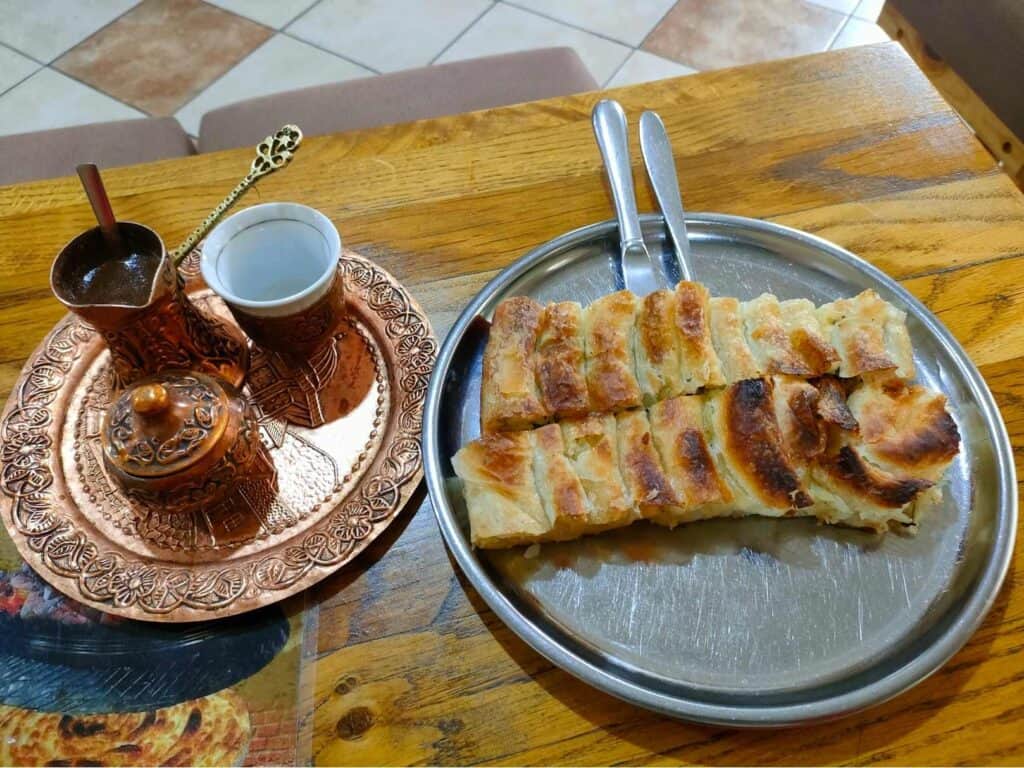
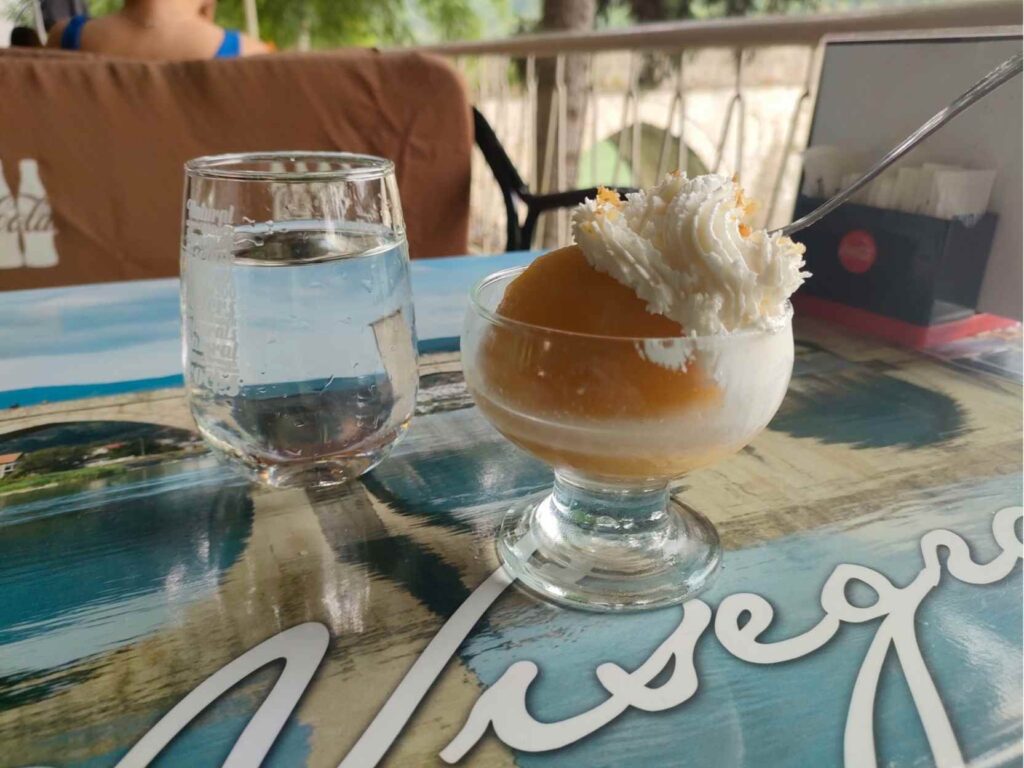
Backpacking in Bosnia and Herzegovina – How to get around with public transport
I want to write about it in detail as I faced difficulties getting around by public transport. Bosnia and Herzegovina has a train and bus network but could be more well-organized. It is not the most backpacker-friendly country for a couple of reasons:
– buses and trains are infrequent;
– to some places, there is only one bus daily, and they mainly depart from Sarajevo or Mostar.
– There are even much fewer buses at the weekends
– Often, buses leave early morning or in the evening
– You can check the bus schedules here, but never take it for granted. It happened that there was supposed to be a bus, but there wasn’t. So, when you arrive at a station, ask right away for information about your next destination to avoid bad surprises that mess up your plans
– The timetable indicated on the board at the bus station can also be confusing, as some on the list only depart on specific days without being indicated. Always double-check at the bus company’s office at the station
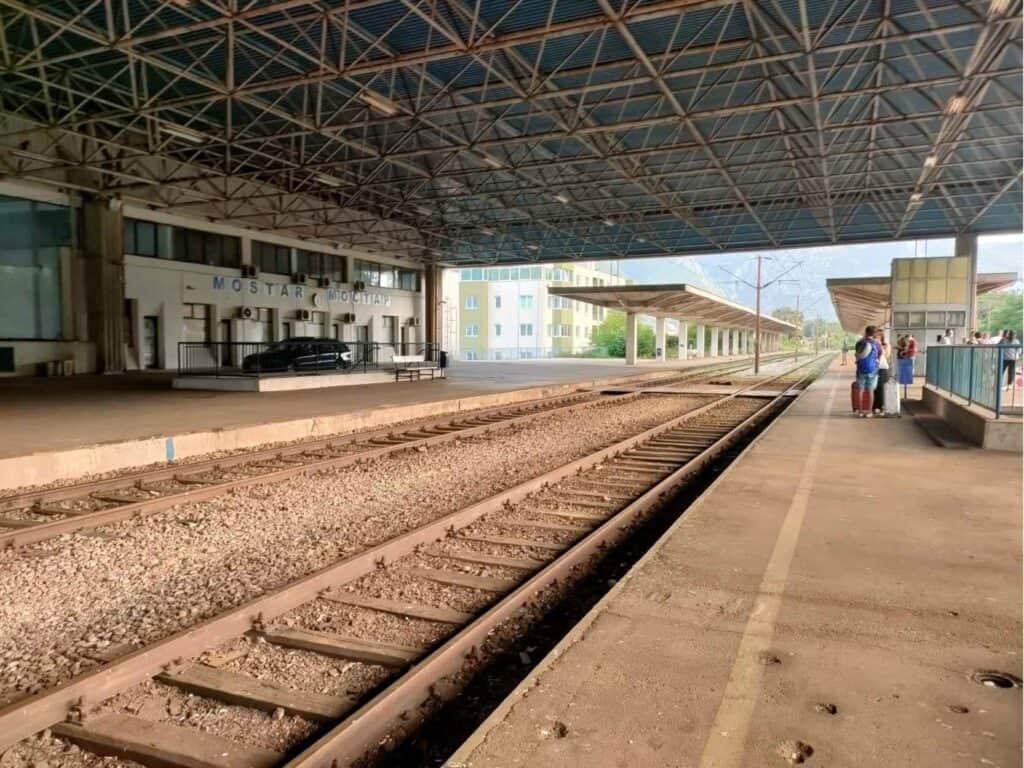
– Sarajevo and Mostar are two cities divided among the ethnic groups (Serbs- Bosniaks and Croats- Bosniaks), having a bus terminal on each side. Some destinations are only covered by one of the stations, while others by both, but they cannot give any information about the timetable of the other bus station of the same city. The East Terminal of Sarajevo, i.e., the Bosnian Serb part, has more connections with other cities in Republika Srpska, while bus connections are less frequent between the Federation of BiH and Republika Srpska. For example, I took a bus from the East Bus Terminal of Sarajevo as I traveled to Trebinje in Republika Srpska. I wanted to continue to Neum, the coastal city, one and a half hours away, but there was no bus connection at all. Instead, I had to take a bus back to Mostar (2 and a half, 3 hours) and the next day a 2-hour-long trip to Neum.
Sarajevo travel guide ( 1 day, 2 days and 3 days itinerary)
– It is not too cheap considering that the Sarajevo- Mostar bus ticket costs 28KM (14 EUR), whereas you can rent a car for 25-30 EUR/day already.
– To smaller places, you need to take a taxi.
– Sometimes, taking an organized tour is the easiest and cheapest way to visit places
All in all, the easiest way to get around in Bosnia is with a car. However, if you travel alone or cannot rent a vehicle for other reasons, you can still visit many places by bus, but you need to think ahead, which requires more planning. I didn’t want to scare you; I had a great time traveling around the country with public transport, but I wanted to share my experience so your backpacking trip in Bosnia and Herzegovina runs smoothly.
Other important things to know about getting around with public transport in Bosnia:
– Buses are punctual, so be there always on time to buy your ticket at the counter if you don’t or can’t buy it online. Also, once the bus departed 20 minutes ahead of schedule, they just put a note on the ticket counter at the station about it.
– Either buses or smaller vans are in service, hence the difference in the duration of the trip
– During longer journeys, there are some breaks.
– You can listen to local music, which makes the trip actually enjoyable
– Apart from the most popular routes, buses are usually half-empty even during summer, so often you can have two seats for yourself
– The bus and train stations are centrally located, so you can get to downtown on foot (even in Sarajevo, though it is a somewhat longer walk there)
Here are some tips about what to pay attention to and what itinerary you can easily complete based on my experience.
I attached the photo I took in the tourist information of Sarajevo of the bus schedule, but as said, always double-check when you are at the station.
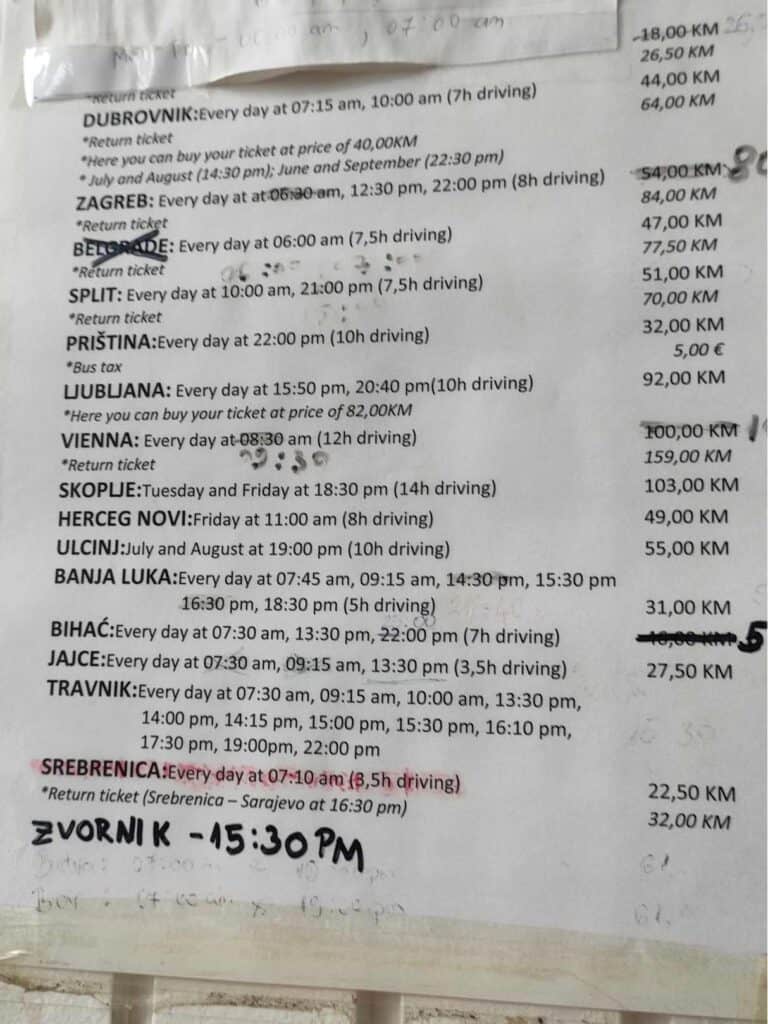
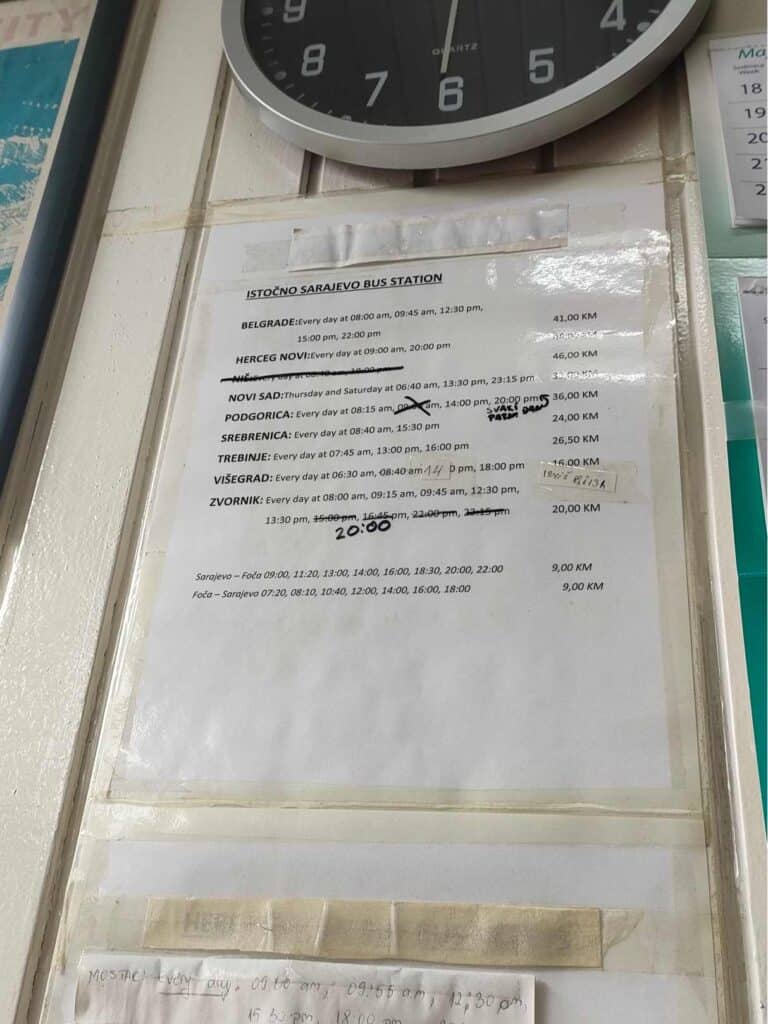
Sarajevo-Mostar:
Even between the two most touristic cities, there are only a few buses and trains daily.
Between Sarajevo and Mostar, it is better to take the train, which only costs 7 EUR, while the bus costs 14 EUR. The train is comfortable, clean and spacious and only takes 2 hours, whereas the bus is busier and takes 3 hours.
Check the bus schedule here
Check the train schedule here
Sarajevo- Srebrenica by bus:
The bus from the East Station leaves at 8:40 and returns at 16:30. However, this bus was rescheduled and departed 20 minutes earlier on the way back.
Mostar- Neum: bus departs at 7:00 and returns at 17:30
A return ticket costs 28 KM (14 EUR)
Mostar-Trebinje:
A bus departs from Mostar at 17:30, taking 3 and a half hours. You can take the bus at 16:30 the next day to return.
Sarajevo-Travnik (2 hours, ~ 20KM):
Bus departs at 9:15, 10:00, 13:30, 14:00, 15:30, 19:00
If you take the bus at 9:15 to Travnik, you can visit the same day Travnik, Jajce and arrive in Banja Luka by evening without having just enough time to spend at each place.
Travnik- Jajce: 11 KM (1 and a half hours, 5.5 EUR)
Jajce – Banja Luka (one and a half hours, 15.8KM~8 EUR)
The bus from Jajce leaves at 19:05
After Banja Luka, I took a direct bus to Prozor at 2 pm and from Prozor, a taxi to Ramsko Lake.
From Prozor, there is a bus to Jablanica, and Jablanica has regular connections to Sarajevo.
Bus schedules are always subject to change and depend on the day and season, so double-check before planning your trip. However, it will give you an idea about how to get around with public transport in Bosnia and Herzegovina.
Is Bosnia and Hercegovina safe to visit?
The war of the 1990s is the first thing most people associate with Bosnia. However, it has been over a long time, and Bosnia and Hercegovina are one of the safest places in Europe. It is even safe for solo female travelers.
As an aftermath of the war, there is only one thing, you should take extra care, and these are the landmines that still have not been cleared everywhere, especially around the former frontlines. Since travelers don’t know where these landmines are, they always stay on the indicated part and never go-off-the beaten places. So, if you plan to go hiking in the mountains better to go on an organized tour.
How to plan your trip to Bosnia and Herzegovina
Flight: Find the cheapest flights to Bosnia and Herzegovina with Skyscanner or book flights, hotels, and local tours, rent a car, and benefit from immediate cashback through Wayaway! You can sign up for the Wayaway Membership program for only 49.99$! Use my discount code to get extra 10% off the subscription fee: VOG
Accommodation: Book hostels through hostelworld.com or look for both hostels and hotels in Bosnia and Herzegovina on booking.com.
Local tours: Book walking tours in tours in Sarajevo, Mostar and other one or multi-day trips in Bosnia-Herzegovina through GetYourGuide or Viator
Rent a car: Find a great deal to rent a car with Discover Cars or Rentalcars.
Bus ticket: Book your bus ticket through Bookaway in Bosnia and Herzegovina.
The Bosnian war (1992-1995)
The fall of Yugoslavia, the Federation of six countries (Slovenia, Macedonia, Croatia, Bosnia and Hercegovina, Montenegro, and Serbia) and two autonomy regions (Kosovo, Vojvodina) led to the revival of nationalism with ethnicity and religion in focus. By 1991, Slovenia, Croatia, and Macedonia declared independence. But Serbia and Montenegro didn’t want Yugoslavia to fall apart and wanted to be the successor state to Yugoslavia.
In the Socialist Republic of Bosnia and Herzegovina, half of the population were Bosnian Muslims (Bosniaks), a third were Christian Serbs, and 17% were Croats.
In 1992 Bosnia held a referendum, where a majority of the people voted for independence, but Bosnian Serbs making up a third of the population, boycotted the referendum. Instead, they declared their own state within the borders of Bosnia: it was called Republika Srpska (Bosnian Serb Republic), that was only recognized by Slobodan Milosevic, the new leader of Serbia who envisioned a Great Serbia with all Serbs living there. All that flared up ethnic tensions between Croats, Serbs, and Bosniaks, who had been living in peace for a long time in Yugoslavia, and the war started.
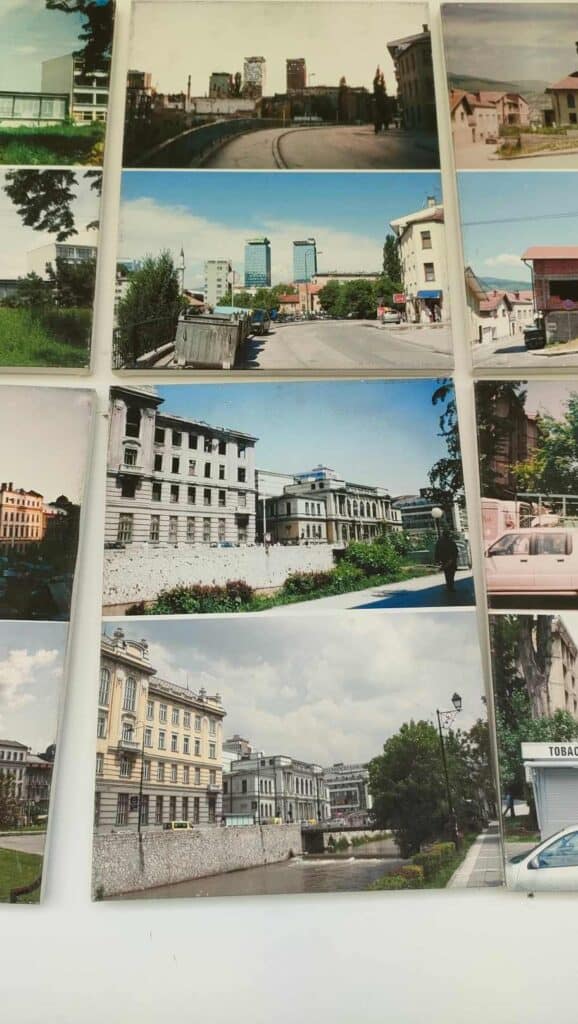
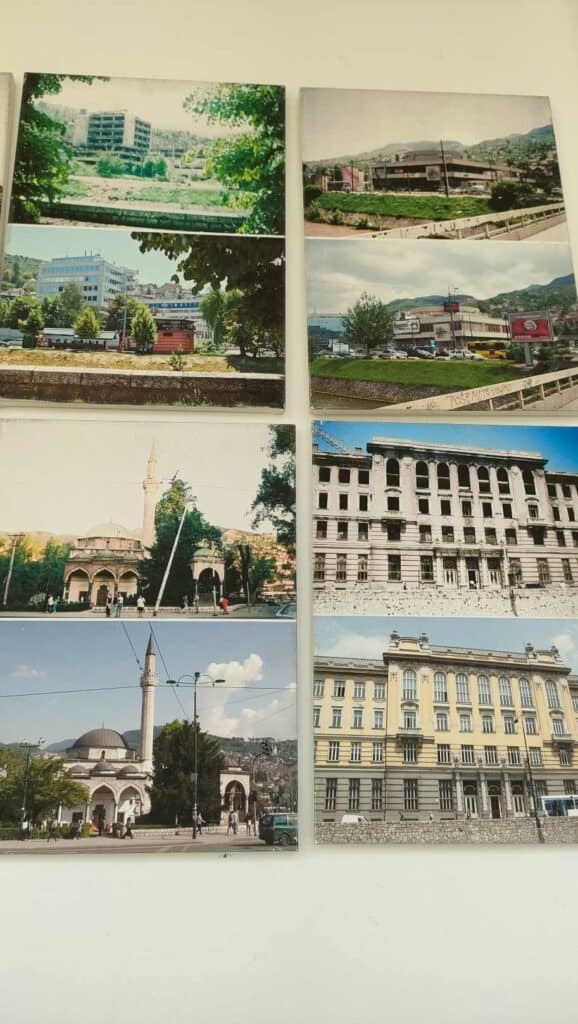
In the beginning, Bosnians and Croats fought together against the Serbs. Later, the alliance between Bosniaks and Croats fell apart, and they started to fight each other in Mostar when it turned out that the Serb and the Croatian leaders divided Bosnia and Herzegovina with each other. This was a war within a war.
Sarajevo was under blockade first by the Yugoslav People’s Army, then by the Army of Republika Srpska for 1425 days. Many Serbs stayed in Sarajevo during the siege and were also fighting against the Serbs.
The international community was hesitant to be too involved in the events. The UN sent food, medicine, and peacekeeping soldiers. But the UN keeps itself to its peacekeeping principles, not interfering in the conflict. After a series of ethnic cleansing, the UN started establishing safe zones across the country to protect civilians fleeing the war.
The worst massacre of the war happened in Srebrenica, where nearly 10 000 Bosniaks sought refuge in the UN safe zone. On 11th July 1995, Serbs marched into the town without resistance and systematically executed 8000 Bosniak men and boys.
All in all, around 100 000 people died, and millions were forced to flee during the war.
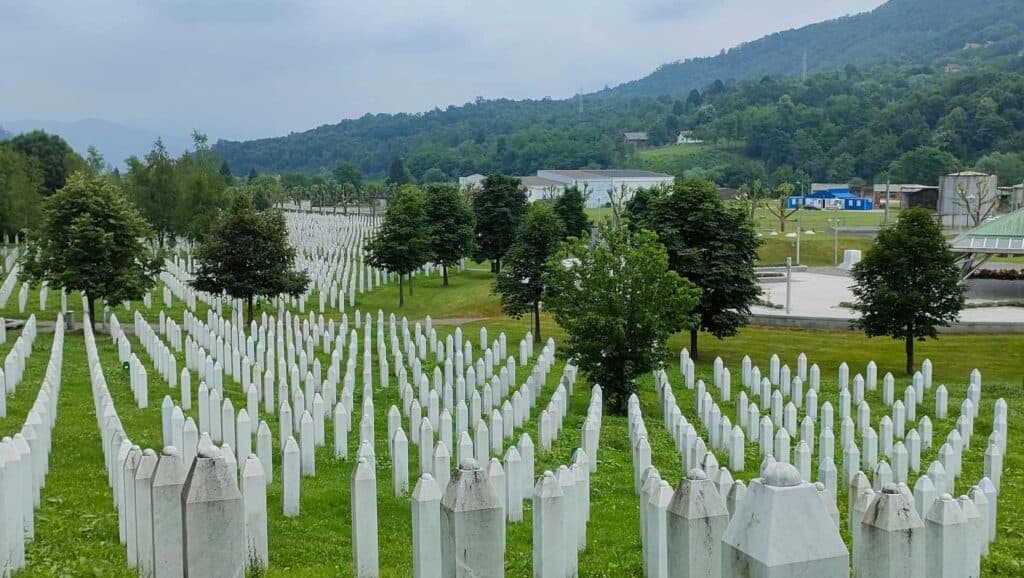
After the Dayton Agreement was signed in December 1995 by the presidents of Croatia, Bosnia, and Serbia, they divided Bosnia into two entities: The Federation of Bosnia and Herzegovina (51%) and Republika Srpska (49%). Since then, the country has had three presidents, and the two parts have separate political and school systems. They use Cyrillic letters in Republika Srpska and Latin letters in the Federation.
The war reshaped this country; despite the Serbs, Croats, and Bosniaks living in relative peace, the ethnic divides that were the root of the conflict have become stronger. There were human rights abuses from all sides, and each ethnic group had a different perception of the war. The memory of the atrocities committed still haunts this place, both in the physical scars of the land and the bodies and minds of its people.
What to visit in Bosnia in 4 days?
Day 1: Sarajevo
Day 2: Konjic, Tito’s bunker, drive to Mostar
Day 3: Mostar, Medjugorje
Day 4: Kravice, Počitelj, Blagaj, tour of Death of Yugoslavia
What to visit in Bosnia in 5 days?
Day 1: Sarajevo Fall of Yugoslavia and war tour, Baščaršija, cable car to Trebević
Day 2: Jajce and Travnik
Day 3: Konjic, Tito’s bunker, drive to Mostar
Day 4: Mostar, Medjugorje
Day 5: Kravice, Počitelj, Blagaj, tour of Death of Yugoslavia
What to visit in Bosnia in 7 days?
Day 1: Sarajevo Fall of Yugoslavia and war tour, Baščaršija, cable car to Trebević
Day 2: Galerija museum, Jajce and Travnik
Day 3: Konjic, Tito’s bunker, drive to Mostar
Day 4: Mostar, Medjugorje
Day 5: Kravice, Počitelj, Blagaj, tour of Death of Yugoslavia in Mostar
Day 6: Trebinje
Day 7: Neum (in summer) or Višegrad
Bosnia 10 days itinerary
Day 1: Sarajevo Fall of Yugoslavia and war tour, Baščaršija, cable car to Trebević
Day 2: Galerija Museum, War Childhood Museum, viewpoints (Yellow Fortress, Avaz Twist Tower)
Day 3: Jajce and Travnik
Day 4: Srebrenica
Day 5: Višegrad
Day 6: Konjic, Tito’s bunker, drive to Mostar
Day 7: Mostar
Day 8: Kravice, Počitelj, Blagaj, Death of Yugoslavia tour
Day 9: Medjugorje
Day 10: Trebinje
See below the detailed description of the places so that you can decide whether to include them in your itinerary.
Sarajevo, the capital
Sarajevo must be part of your itinerary regardless of how many days you have in Bosnia and Herzegovina. You can spend 2-3 days there, but if you only have a day you can still visit many things. However, the best is to stay for the night to enjoy the bustling nightlife and get a deeper insight, as there is so much to see and learn about the entire country in Sarajevo.
There are several monuments, viewpoints, museums, and options for local tours, so I made a separate travel guide about Sarajevo.
Where to sleep in Sarajevo?
Low-budget:
Beautiful View of Sarajevo Center
Mid-range hotels
High-end hotels
Konjic, Tito’s bunker
Konjic is halfway between Sarajevo and Mostar. Apart from being a rafting paradise, it has the most unique attraction, Tito’s bunker, an engineering masterpiece, and the largest secret base in Yugoslavia. It was built 280 meters deep below the mountain with all the facilities that enabled the communist elite, with the top 350 politicians, to stay safe and govern the country for six months in case of a nuclear attack.
It is in a secluded location carved inside the mountain, accessible through an uncharacteristic house. The bunker was completed in 1979, one year before Tito died. Only Tito and four other people knew about it.
There is no evidence that he visited it in person, but it is likely as he spent so much on it. It cost $4.6 billion for the Yugoslav people. You will be impressed by what you see inside the mountain, a meticulously planned telecommunication system, air conditioning, a generator, parliamentary meeting rooms, private rooms, telephones, and typewriters made internal and external communication possible.
And it is only one of Tito’s megalomanic and paranoid projects. He built approximately 100 secret military bases in different countries. Many of them are still undiscovered.
Tito’s bunker is a unique experience during a trip to Bosnia, giving insight into the atmosphere of the Yugoslav times under Tito.
How to go there?
You can drive there or take the Sarajevo-Mostar bus or train and get off in Konjic.
You can only enter the bunker with a local guided tour three times daily: 9 am, 12 pm, and 3 pm. It costs ~11 EUR. For groups of 10 and more people, it is possible to organize the tour at another time with the previous reservation.
There are organized tours to Tito’s bunker in Konjic from Mostar and Sarajevo, including transport.
Mostar
Mostar is another landmark of Bosnia and Herzegovina and one of the most visited cities thanks to the Old Bridge.
Read this detailed travel guide about Mostar, including the best places to visit, to stay at, and the best viewpoints.
As in Sarajevo, I highly recommend taking part in a local tour that gives an insight into the city’s dark past when thousands of people died, and the Old Bridge collapsed. Within just a few hours, you learn about the Yugoslav times, daily life, attractions, and the aftermath of the war. Plus, you can ask your questions.
Where to stay in Mostar?
Low-budget
Pansion Oscar Summer Garden (booking.com review: 8.5)
TIRYAKI (booking review: 9.3)
Each apartment in the centrally located guesthouse offers a terrace with a mountain view
Mid-range
Elegant Studio Apartments Lasta (booking review: 9.9!)
Urban Residence Apartments (booking review: 9.4)
Villa Hodžić (booking.com review: 9.5)
Bosnian National Monument Muslibegovic House (booking review 9.3)
High-end
Hotel Mepas (booking.com review 9.2)
Hotel Eden (booking.com review 8.4)
How to get there?
By train:
The train is the best option to go from Sarajevo as it the cheap, comfortable, clean, and fast. In only two hours, you get to Mostar. Take the train at 7: 15 in the morning. Check the timetable here. You don’t have other options as there are only a few trains a day. It costs 14 KM (~7 EUR).
To return from Mostar, you have two 17:09 and 19:56
By bus: There are more buses a day from Sarajevo, but if you want to use the day, better you take the one at 6 am or 9 am. To return from Mostar, you can take it at 6.15 pm or 7.10 pm. The journey takes almost 2 and a half hours each way. One ticket costs around 12-14 EUR. If you book a return ticket, it will be cheaper than buying your tickets separately.
Travnik
Travnik is among the less visited destinations in Bosnia and Herzegovina. However, combining it with the Pliva waterfalls in Jajce and the nearby watermills makes a perfect day trip from Sarajevo.
All the attractions are within walking distance, making it easy to discover. During Ottoman rule, it was an administrative center, the seat of the Turkish viziers (high officials), and a primary trading town. The old town of Travnik turned into a bustling trading center with artisans’ quarters similar to Mostar and Sarajevo.
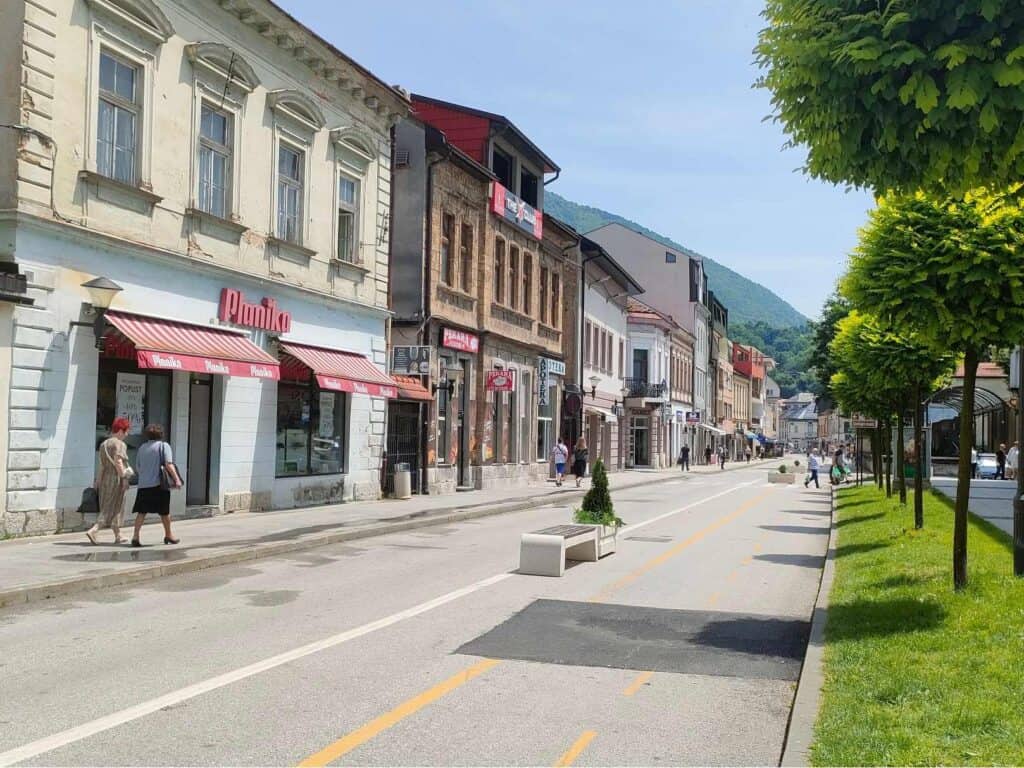
Travnik was also called the European Istanbul as it was the most oriental-looking city in Bosnia until a devastating fire in 1903 that sadly destroyed most of the buildings.
On top of a hill downtown sits the old town castle (Stari Grad castle), a famous attraction of Travnik. It is worth climbing up for the view, but apart from that, there is not so much to discover. There is no accurate information, but it is estimated that the castle dates back to the end of the 14th century or the beginning of the 15th century, which means it was constructed already before the arrival of the Ottoman Turks for defense purposes. The Ottomans later expanded and developed it due to its strategic importance, transforming it into a fortress with watchtowers.
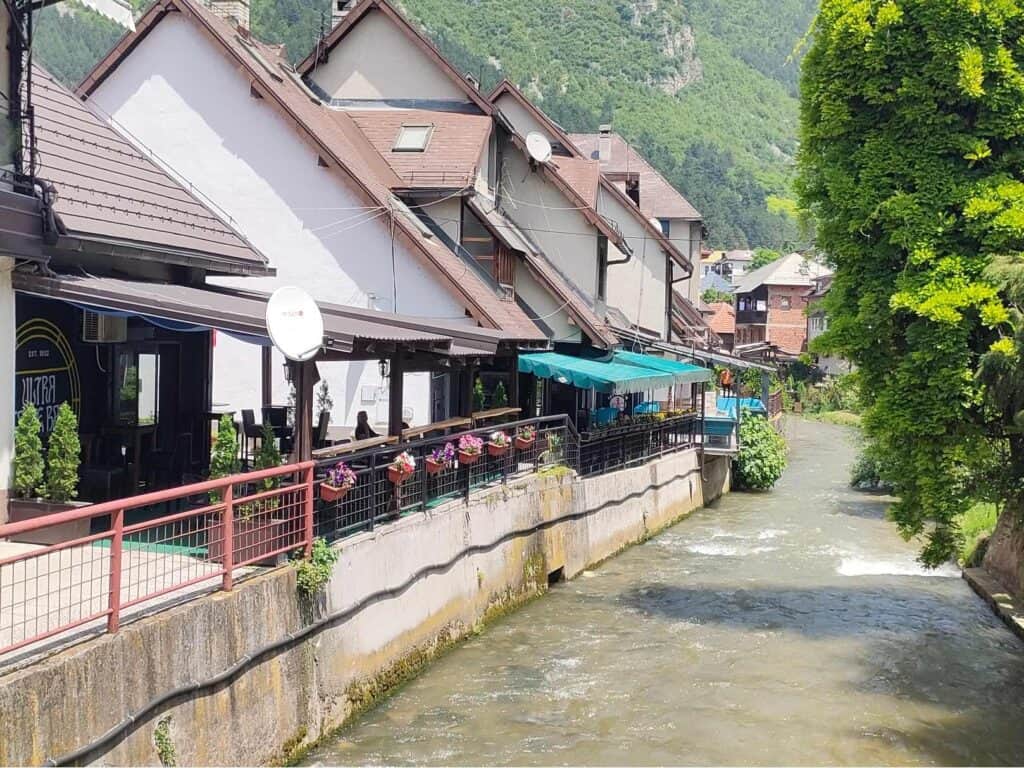
The city is also known in Bosnia as the birthplace of Ivo Andrić, who won the Nobel Prize in literature for his novel “The Bridge on the Drina.” He moved to another Bosnian city, Višegrad, where this reputed UNESCO World Heritage bridge is found. The museum that houses the Ivo Andrić museum is not his family home but a replica of that. Part of the exhibition is a photo of him receiving the Nobel Prize. He also wrote the Travnik Chronicles, a novel in which the city appears as an international crossroads through the lives of a French and an Austrian ambassador living on the opposite side of the town.
The Sulejmanija/Šarena Mosque (Coloured Mosque) is the most famous attraction of Travnik. With its brightly painted pale colors and artistic details (trees and grapes) on the outside walls, it is one of the most beautiful mosques in the Balkan. Another unique thing is that the mosque is supported by stylish columns, among which is a small Bezistan (old shopping bazaar) function. Like most notable mosques, it also contains hairs from the prophet Mohammad’s beard as relics.
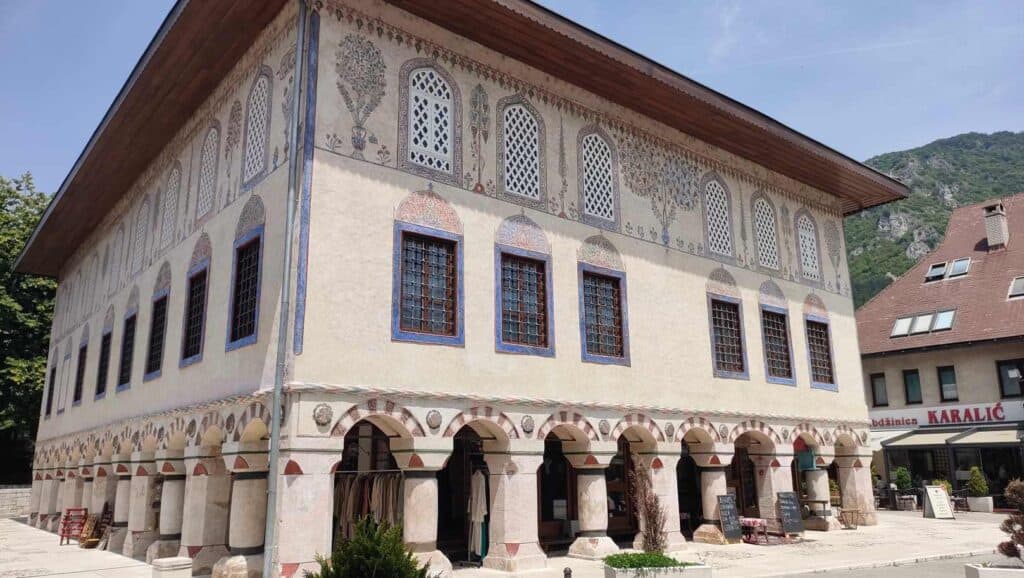
You must remove your shoes before entering and wear a scarf as in any other mosque. From the gallery, you can get a great view from above. As in all mosques, the mihrab (niche indicating the direction of Mecca) and the minbar (pulpit from where the imam delivers its sermons) are the central parts of the mosque.
Plava Voda (blue water) is another must-see in Travnik that has its source in the old town near the fortress. The water cuts through lush vegetation, and at the bottom, the restaurants and cafés are a perfect place to enjoy the fresh breeze carried by the spring. Enjoying the relaxing atmosphere at the Plava Voda is one of the best things to do in Travnik. After that, the river runs through part of the old town with some other cafés built next to that.
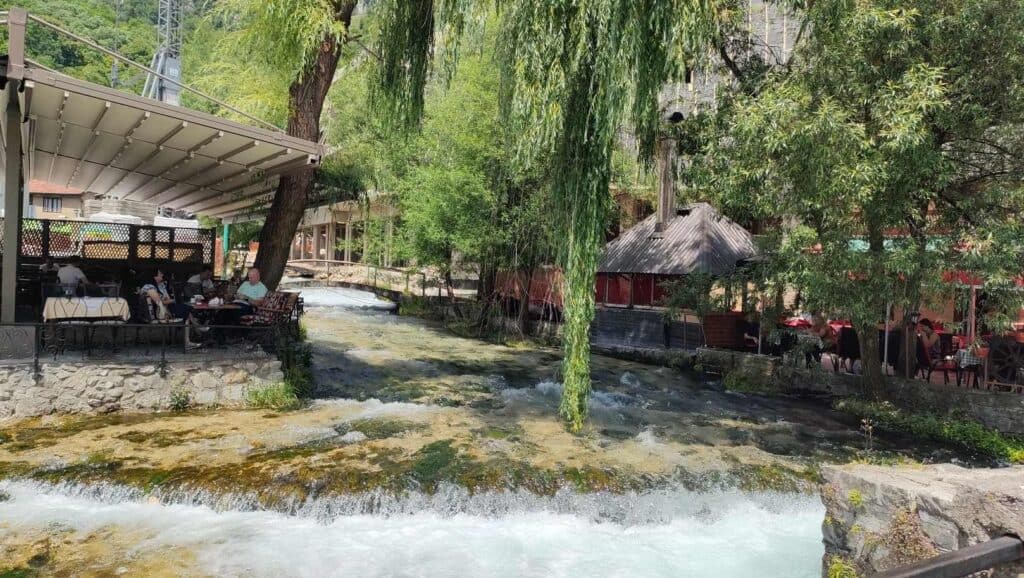
Strolling downtown, you will also see the graves of former Ottoman Governors (viziers) enclosed by grills that remind you of the city’s importance during Ottoman times.
Located along the main Bosanska street, you will pass by Lukacka Dzamija, one of the oldest mosques in Travnik’s old town, next to a clock tower (Sahat Kula), one of the two in the city.
During a Bosnian trip, at one point, you probably try the Bosnian Ćevapi. Travnik offers a particular type called Travnički ćevapi. And if you are up to trying other local specialties, look for the local cheese.
How to get to Travnik?
Travnik is quite well connected to other cities in Bosnia and Herzegovina. You can get there from Sarajevo, Jajce, Mostar, Tuzla, Banja Luka, Bihać, or even Split (Croatia).
As in most cities in Bosnia, the bus station is centrally located, making it easy to discover for backpackers.
Check the bus schedule here, but it is always better to confirm on the spot again to avoid bad surprises, especially since public transport is not the easiest thing in BiH.
Where to sleep in Travnik?
Low budget
Hostel Tron: It is 4.7 km from the city center (7 minutes by car) but a charming, affordable hostel. (booking.com 8.4 very good)
Mini Apartment Smile: a clean, fully equipped private apartment in the very center of Travnik (booking.com review 9.4)
Apartment Pahuljica: a clean, fully equipped private apartment in the very center of Travnik (9.6)
Mid-range/high-end
Hotel Vezir Palace: Located just outside the castle, it is one of the best hotels in Travnik (8.4)
Lipa Hotel: a perfect location along the Bosanska main touristic street downtown, a modern hotel with spacious rooms (8.7)
Višegrad
The small city with less than 6000 inhabitants lies at the confluence of the famous Drina and Rzav rivers in Republika Srpska, the Bosnian Serb part of the country.
The Dayton Agreement signed in December 1995 ended the Bosnian war and divided the country into two entities: the Bosniak and Croat-inhabited Federation of Bosnia and Herzegovina (FBiH) and the Serb-inhabited Republika Srpska (RS). In the Serb part, they use Cyrillic letters instead of Latin. Don’t be scared; everything is indicated in English as well. When you are in the Bosnian Serb Republic, the Bosnian flag is replaced by Serbian colors.
In the 1990s, before the war, the population was approximately 60% Bosniak. After the war, the cities have become ethnically homogenous, and today Bosniaks make up only around 5% of the population.
Apart from that, you will notice little of that as a tourist, as people will be welcome in both parts of the country. However, the war solidified the division between the ethnic groups.
Since Višegrad is only 10 km from the border with Serbia, it is an ideal stop if you plan to continue your trip from Sarajevo to Belgrade.
There are two main attractions in Višegrad: the Mehmed Paša Sokolović Bridge, built during the Ottoman era, and Andrićgrad (Andrić Town).
However, even if you don’t plan to go to Serbia, it is still worth visiting, although I wouldn’t spend more days here. I took the bus from Sarajevo, spent a night here, and returned the day after. Once you are in Bosnia Herzegovina, it is good to visit places other than Mostar and Sarajevo to get a better understanding of the country.
Mehmed Paša Sokolović Bridge
The most famous book of Ivo Andrić, the Nobel prize winner Bosnian author, is “The Bridge on the Drina“, referring to the UNESCO World Heritage site in Višegrad.
In this book, he tells about the life of people from the construction of the bridge during Ottoman and Austro-Hungarian rule. Like most buildings in Bosnia and Herzegovina, the bridge dates back to the Ottoman period. For the best view, cross the bridge and follow the path to the top of the hill to the starting point of the zip line. From here, you get the best view of the historic bridge. If you are up to such things, you can try that and fly over the Drina River.
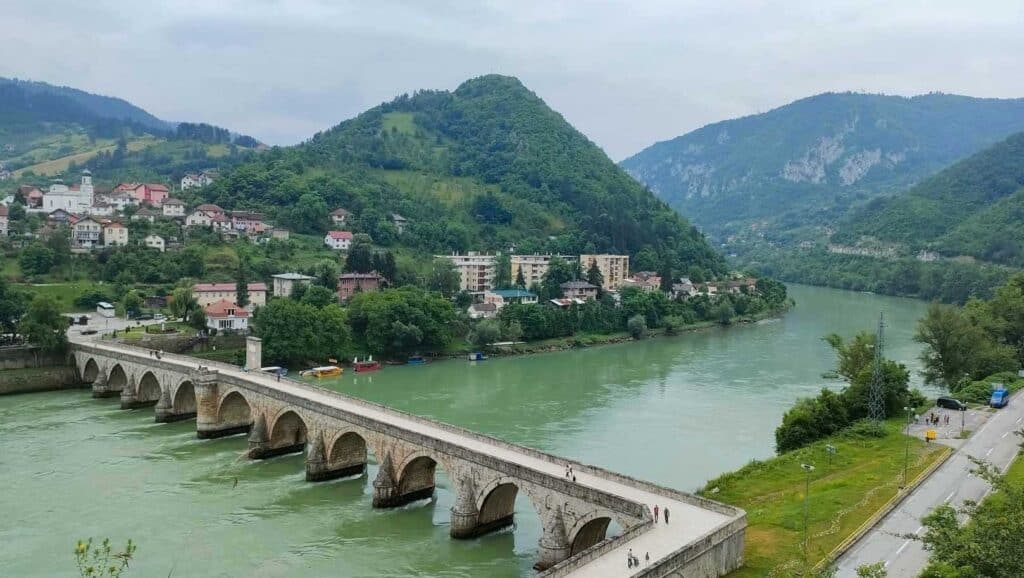
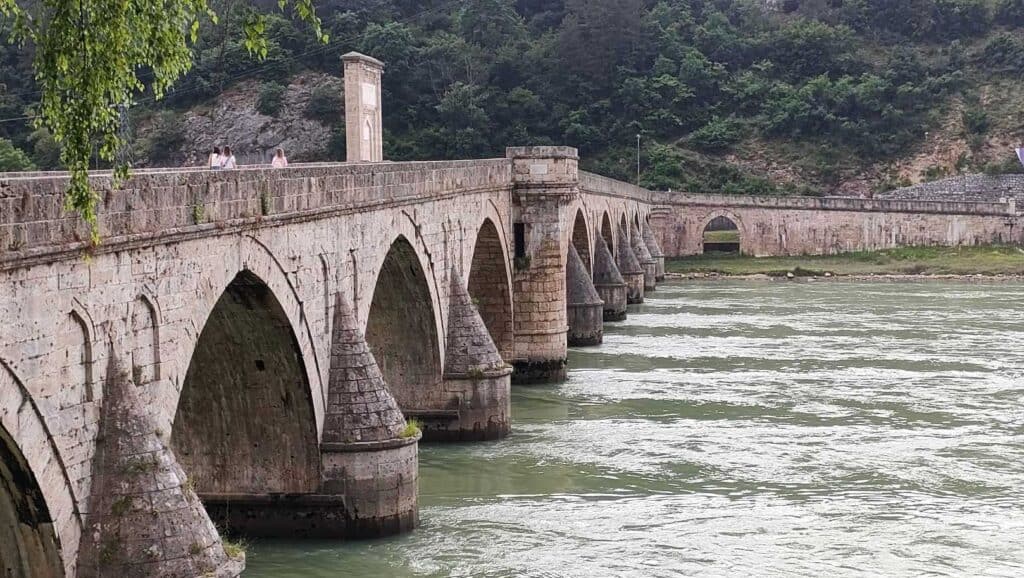
Andrićgrad
The 15 million euro spent for this Disney-like district is a controversial place, but something you should check out. The city of 23 000km2 was the brainchild of Emir Kusturica, the world-famous Serbian film director, in honor of the poet Ivo Andrić (1892-1975). He was born in Travnik, but after his father’s death, he was raised by his aunt in Višegrad.
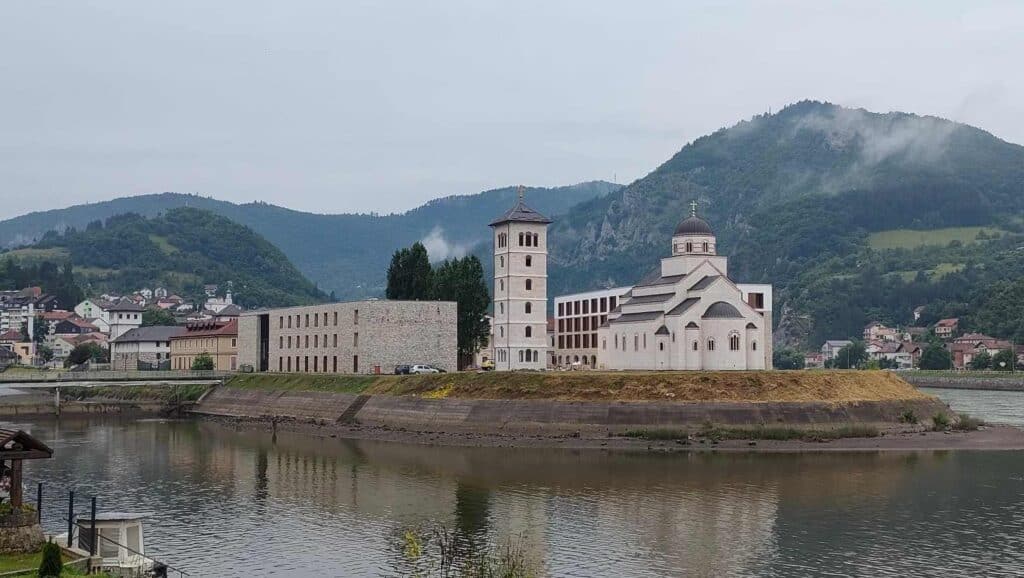
Kusturica even plans to make the movie’s setting based on his famous book in the future. However, what created tension is that the sports complex at this spot used to be a detention center during the Bosnian war, where Bosniak Muslims were tortured and executed. Therefore the whole concept can be regarded as a provocation. The filmmaker explained that he wanted to create something multicultural that unites people of any origin.
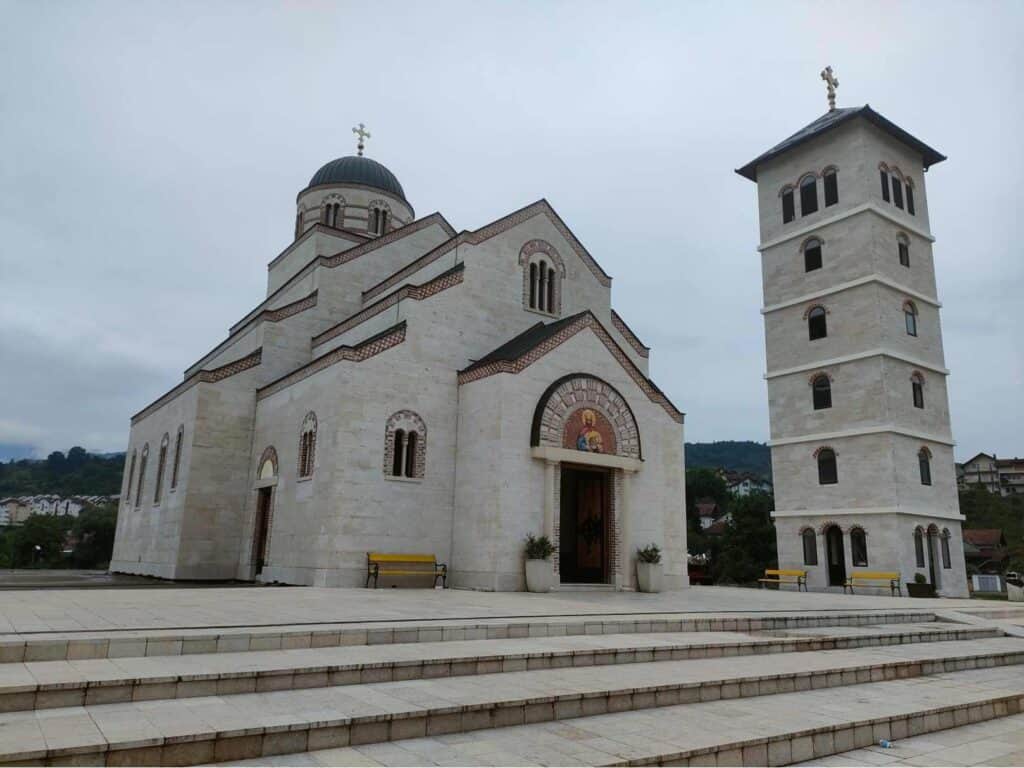
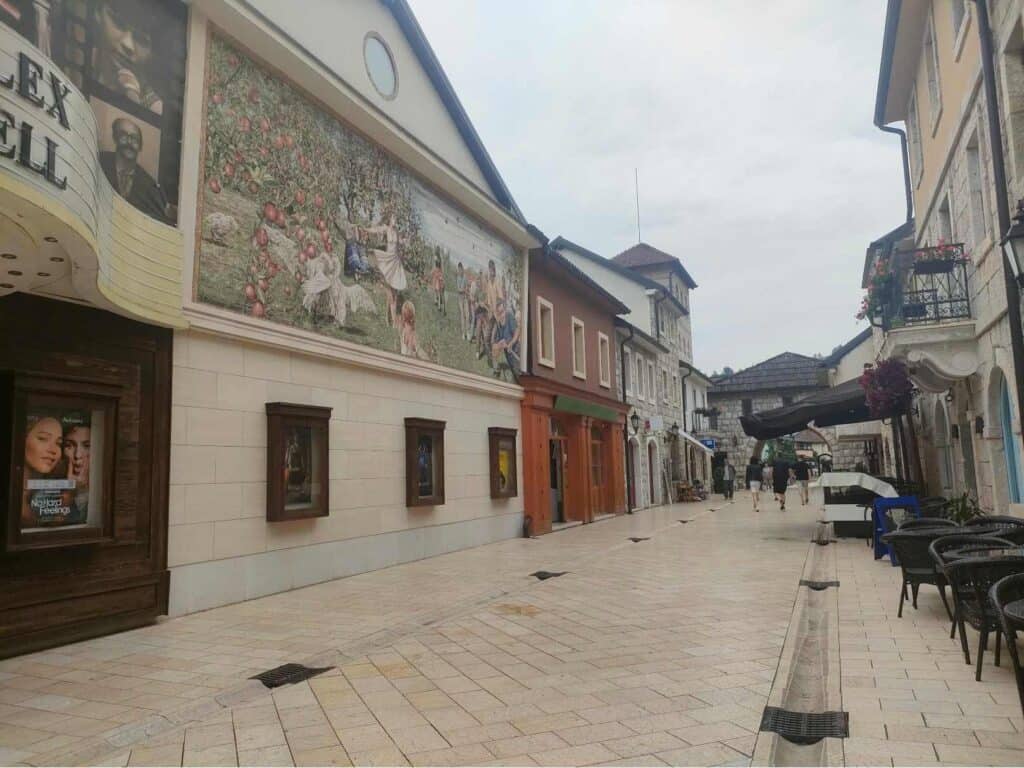
It was officially inaugurated on 28th June 2014 after three years of construction, exactly 100 years after that Archduke Franz Ferdinand was assassinated in Sarajevo by Gavrilo Princip.
It stands on an artificial island accessible by a bridge. It is a strange place where architectural styles seem inconsistently mixed in a modern environment. The entrance to this perfect city is through a fairy tale gate. The stone paradise is designed as a cultural center with a theatre, cinema, gallery, orthodox church, hotel, restaurants, and cafés. It is all about attracting tourists. Some say it is kitsch. Well, the project was costly, and hopefully, it was worth the investment and created jobs as planned. Together with the government of the Serbian Republic of Bosnia, it has a 49 percent stake in the project, with Kusturica owning the remaining 51 percent.
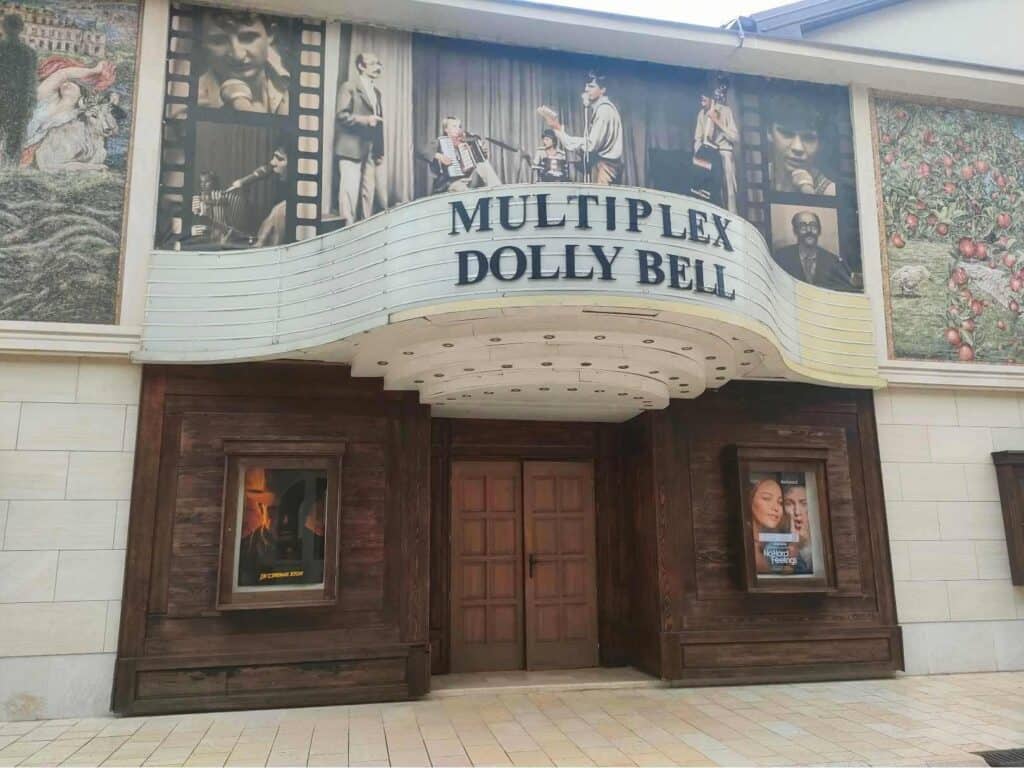
It is not the only “city” Kusturica built. He built and used Drvengrad, only 30 km away in Mokra Gora, to shoot “Life is a Miracle”. It is now a popular tourist attraction and a venue for a film festival of the same name.
The city has some notable honorary citizens: Milorad Dodik, President of Republika Srpska, one of the investors, and Novak Djokovic tennis player.
Ivo Andrić Memorial Classroom
It is another attraction related to the writer I only saw from the outside as it was closed. The opening hours were not indicated, just a paper on the door that I couldn’t understand, so I’m not sure if it is permanently or temporarily closed.
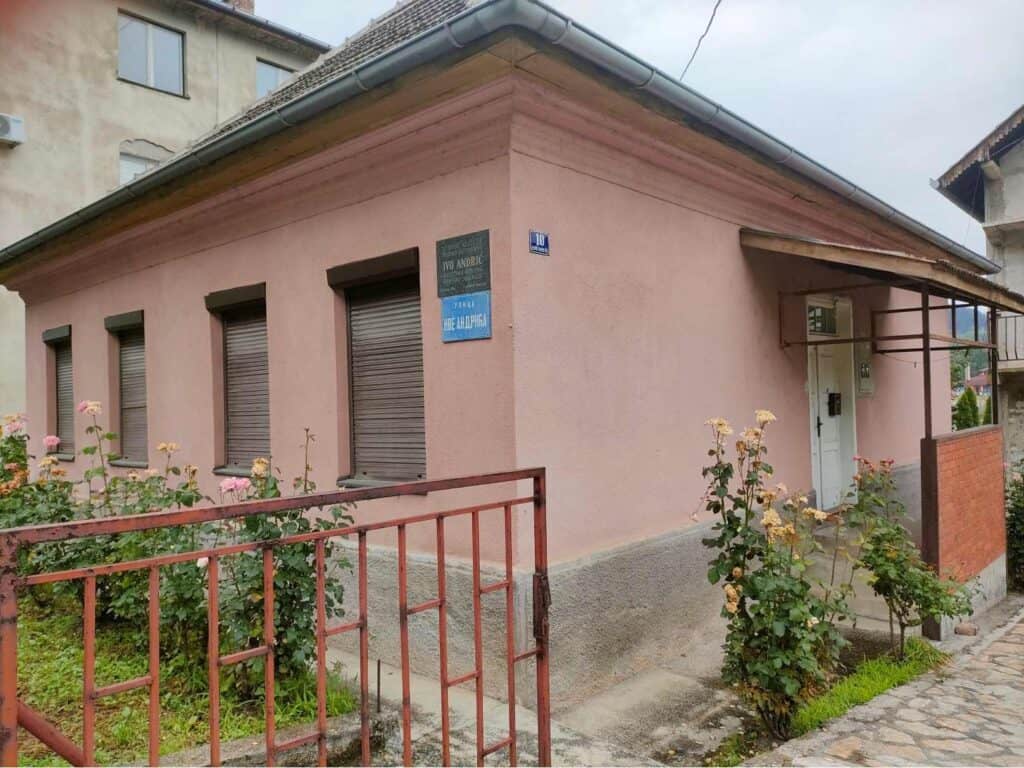
Boat ride in the Tara canyon
The city is next to the stunning 82-km-long Tara Canyon, the bigger part of which is in Montenegro and a smaller one in Bosnia and Herzegovina. The canyon is part of the Durmitor Park in Montenegro and is a UNESCO World Heritage. The Bosnian side is also beautiful, and you see that already approaching the city on the road along the canyon. The best way to enjoy the landscape is to go on a boat ride.
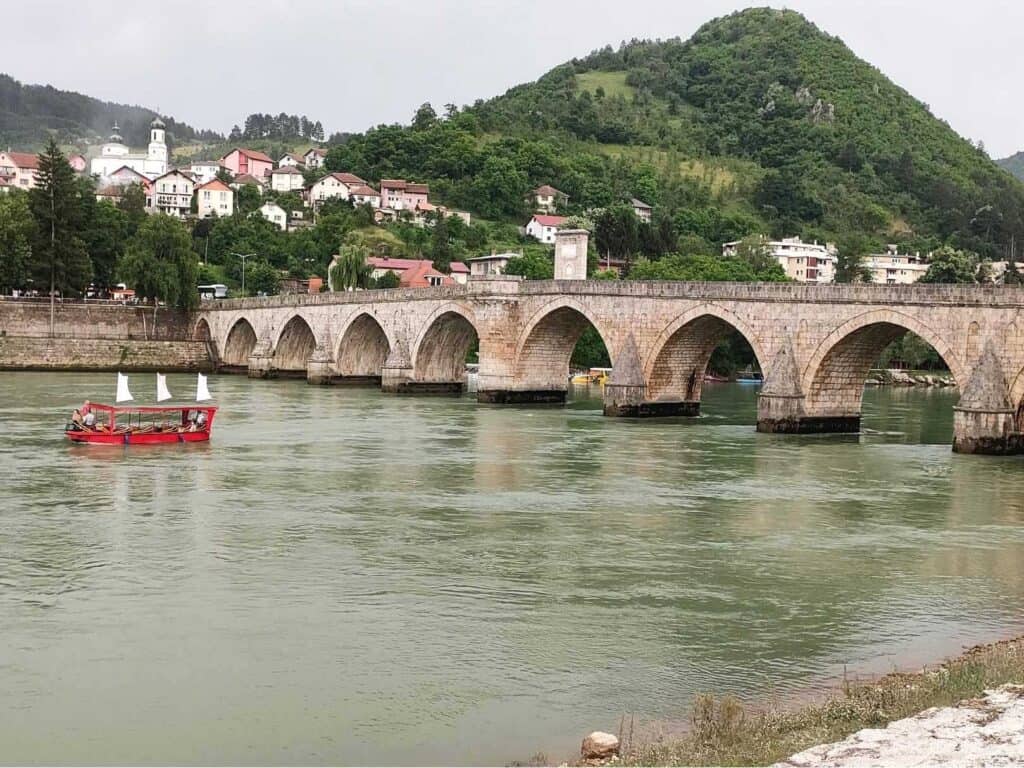
Boats leave from the foot of the Mehmed Paša Sokolović bridge. You can take a shorter and longer boat ride.
The short, half-an-hour boat ride costs 6 Euro and takes 30 minutes. It makes a round, 15 minutes in each direction, passing by Andrićgrad as well.
The longer two-hour boat ride costs 20 Euro, goes deeper into the canyon, and includes a stop at the Stari Brod memorial. This museum honors the 6 150 Serbs murdered by Bosnian Muslims and Croats allied with Nazi Germany in Stari Brod, Višegrad, during WWII. Serb civilians fled the Ustasha (Croatian fascist) offensive and were on their way to Serbia. However, when Italian Nazi forces stopped them at the bridge, they headed to nearby villages like Stari Brod to cross to Serbia by wood rafts. This is where the Ustashas massacred them. After several decades they erected a memorial in 2008 to honor the victims, which was extended with a chapel and in 2019 with a museum. The group of sorrowful figures of families, mothers, and children standing out of the river is striking.
Railway station from the Austro-Hungarian times
With a short walk from downtown, you can reach the old railway station that belonged to the famous line built during the Austro-Hungarian Empire.
Višegrad also has the only stretch of the Austro-Hungarian railway still functional. It runs from Mokra Gora in Serbia, home to filmmaker Emir Kusturica’s Ethno Village.
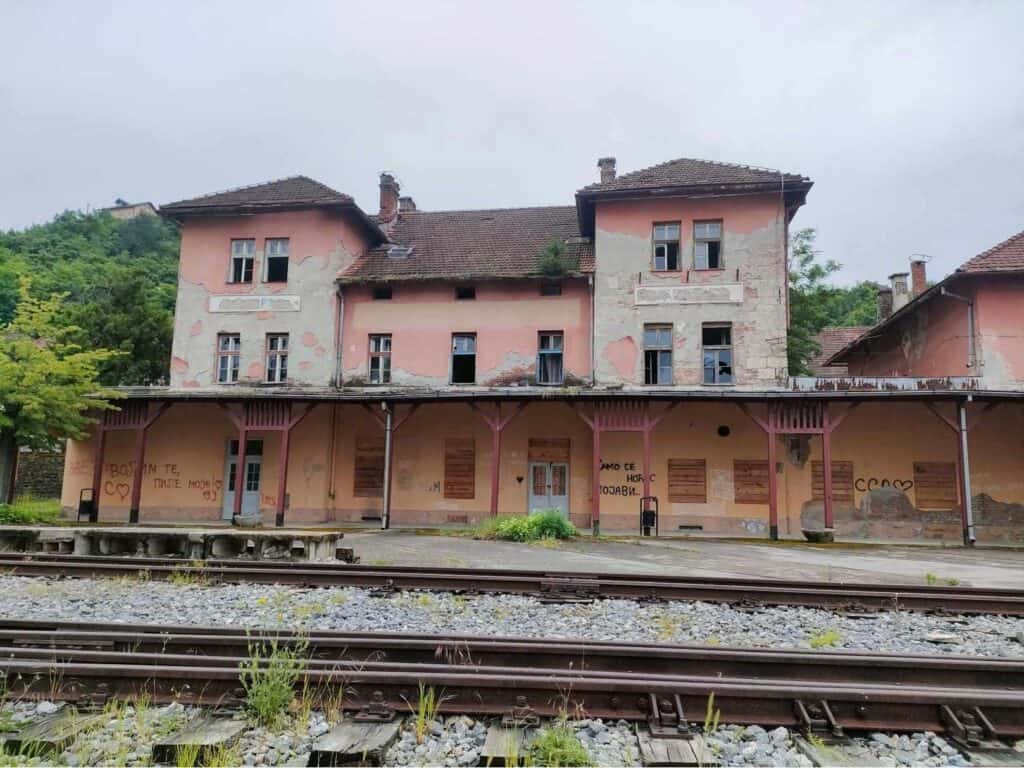
It was a part of the once-famous Eastern railway that linked eastern Bosnia to Sarajevo. At the time of its construction (1903–06), it was the most expensive railroad in the world with great strategic importance for the Austro-Hungarians because of its frontier with Serbia. It is said that 1 km of railway costs 1 kg of gold. After World War I, the railway was a vital trade and transit link between Sarajevo and Serbia. In 1974, the Višegrad–Serbia line was put out of service.
The Mokra Gora–Višegrad line was recently reinstated as a tourist line.
Here you find detailed information about that
Dobrun monastery
Only 12 minutes’ drive from Višegrad is the Dobrun monastery, built in the 14th century close to the Serbian border.
How to get to Višegrad?
Buses from Sarajevo to Višegrad leave from the East Bus Terminal. It costs 20.8 KM (~11 EUR) and takes approximately 3 hours. From Višegrad to Sarajevo, the bus costs 18 KM (~9 EUR) if you plan to return to Sarajevo like I did. The slight difference in the ticket price is because sometimes buses, while other times small vans drive the same route.
Let me tell you about the “bus station” in Višegrad, as it was quite weird. The bus from Sarajevo arrived in the big car park at the foot of the Mehmed Paša Sokolović Bridge. Usually, this is supposed to be the bus terminal. However, when I returned the next day to double-check the departure, I didn’t see any ticket office and started asking around. It seemed that even locals were not sure about where to catch the bus to Sarajevo. Then a waiter explained that I must cross the bridge and wait at the regular bus stop where it passes. There is no actual date of departure, but rather, they give a half-an-hour time frame when the bus can arrive. This is what happened, the bus arrived somewhere at the specified time, and I paid for my ticket on the bus.
Where to sleep in Višegrad, Bosnia and Herzegovina?
There are no high-end hotels in Višegrad; apart from a few hotels, private apartments are the most common places to stay at.
Low budget
Bed & Breakfast Kamengrad (not available on booking.com)
The complex Andrićgrad, also known as Kamengrad, encompasses accommodation, shops, pubs, restaurants, a cinema, and an Orthodox church, if you wish to stay at this unique, though controversial place.
Apartmani Višegradski pogled (booking.com review 9.9)
This modern, spacious apartment on the hill has an amazing view of the city and the Drina River, but you can reach all the attractions quickly. (9.9)
Cherry flower (Trešnjin Cvet ) apartment: (booking.com review 9.7)
Located close to downtown, near Andričgrad, with a perfect view of the city.
Mid-range:
Hotel Višegrad (3 stars) (booking.com review 8.1)
Located directly at the foot of the famous bridge at the riverbank, this is one of the best hotels in the city. The price includes breakfast. (review 8.1)
Apartments Sokolović (booking.com review 9.3)
A cozy apartment with a nice host with a perfect view from the balcony to the river.
Jajce and Pliva waterfalls
Jajce is a small town located on the confluence of the Pliva and Vrbas rivers. Jajce was a popular tourist destination during Yugoslavia, but its dam system was damaged during the Bosnian war, and the increased water level flooded the city.
Enjoying the striking green surroundings and the 22-meter-high waterfall where Plva meets Vrbas is worth a short stop. There are several viewpoints, first directly from where you arrive by car. But you can cross the bridge to the other side, where a small terrace was built to offer visitors a great view of the waterfalls.
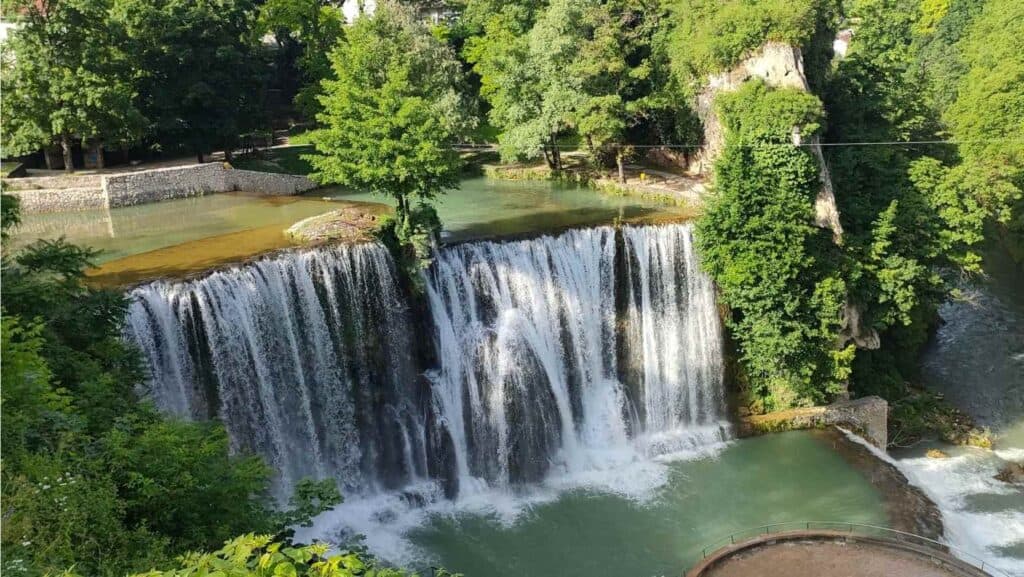
A spectacular citadel on top of the hill is easily reachable on foot from the center.
The underground church, also called the Jajce catacombs, was ordered by Duke Hrvoje Vukčić, the founder of Jajce, as a place of worship for the followers of the Bosnian Church and a burial site for his family in 1410. Be aware that it is significantly colder in the church, which is pleasant during hot summer days.
Entrance fee: 10 KM (~5EUR)
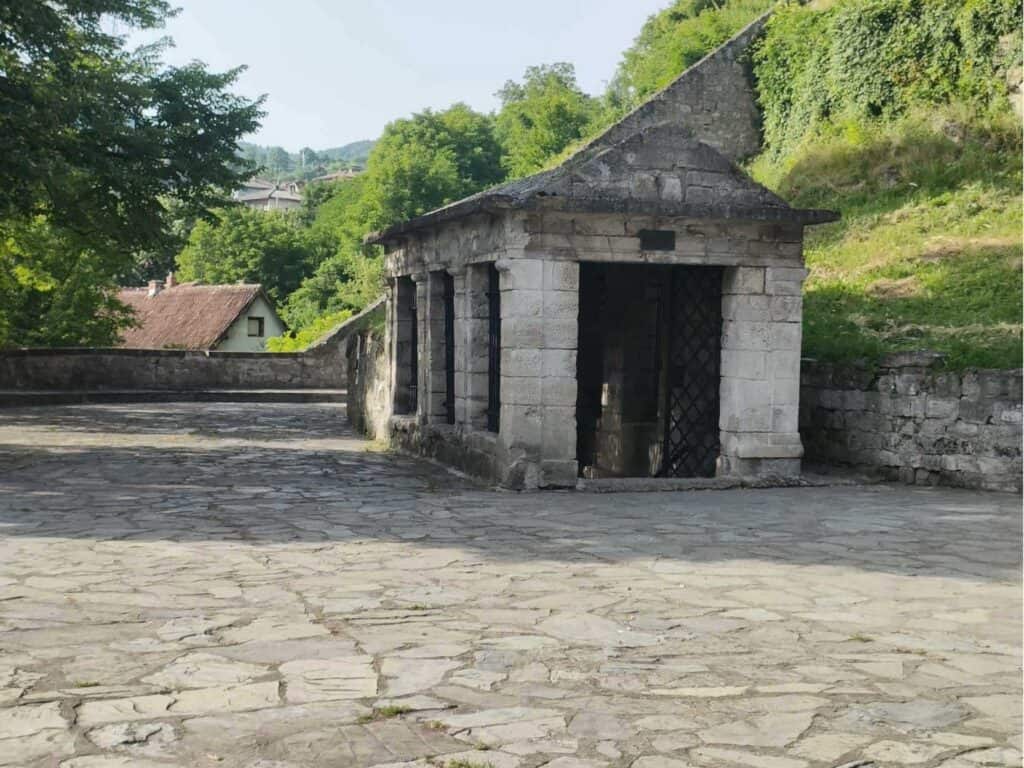
If you are by car, drive further to the Pliva lakes and watermills, only 5 km from the waterfall.
You might be interested to check out the 2nd Session of the AVNOJ Museum that commemorates the antifascist council that was held in this building on 29-30 November of 1943. This political body aimed at representing all people of Yugoslavia. During the session, they stated that the Karađorđević royal family is no longer the country’s legitimate government, and the National Committee for the Liberation of Yugoslavia will act as a provisional government until the end of the war. Tito was elected prime minister, and all federal republics were deemed equal in Yugoslavia.
Once the Republic of Yugoslavia was formed, 29th November was celebrated as a national
During the Yugoslav era, the 2nd AVNOJ Museum was one of the primary historical museums in the country, but Jajce’s cultural significance was forgotten after the war. The museum was reopened in 2008. The hall is arranged in the same way as in 1943, including the chairs’ alignment and the large yellow cushioned chair Tito sat in during the council. During WWII, German troops used it as a prison. Tito’s partisans burnt the building during the town’s liberation but quickly renovated it before the 2nd Session of the AVNOJ.
How to get to Jajce?
There are a couple of buses daily from Travnik to Jajce (5-6 EUR). Check the schedule here.
After Jajce, it makes sense to drive or take a bus to Banja Luka, which takes you through the stunning Vrbas Canyon.
Where to stay in Jajce?
Royal City Apartments (booking.com review 9.1)
Apartman Vinkov’s center (booking.com review 7.9)
Hotel Premium (booking.com review 9.0)
High end:
Apartman Kiss (booking.com review 9.7)
Banja Luka
Banja Luka, the de facto capital of the Republika Srpska (Bosnian Serb Republic) and the second largest city of Bosnia and Hercegovina, is in the northeast. The Bosanska Krajina region is abundant in mountains, but Banja Luka lies in a valley on both sides of the Vrbas River.
Most people come here for rafting, but the city is also worth a visit. It makes a perfect stop if you head to Zagreb or Belgrade. Banja Luka has a lot of green parks and tree-lined boulevards with wide streets perfect for strolling. It is also interesting to see a place in the Serb part of the country. The city was quite late modernized despite always having been an administrative center, and only during the Austro-Hungarian rule in the 19th century turned into a modern town when railroads, schools, factories, and infrastructure were built.
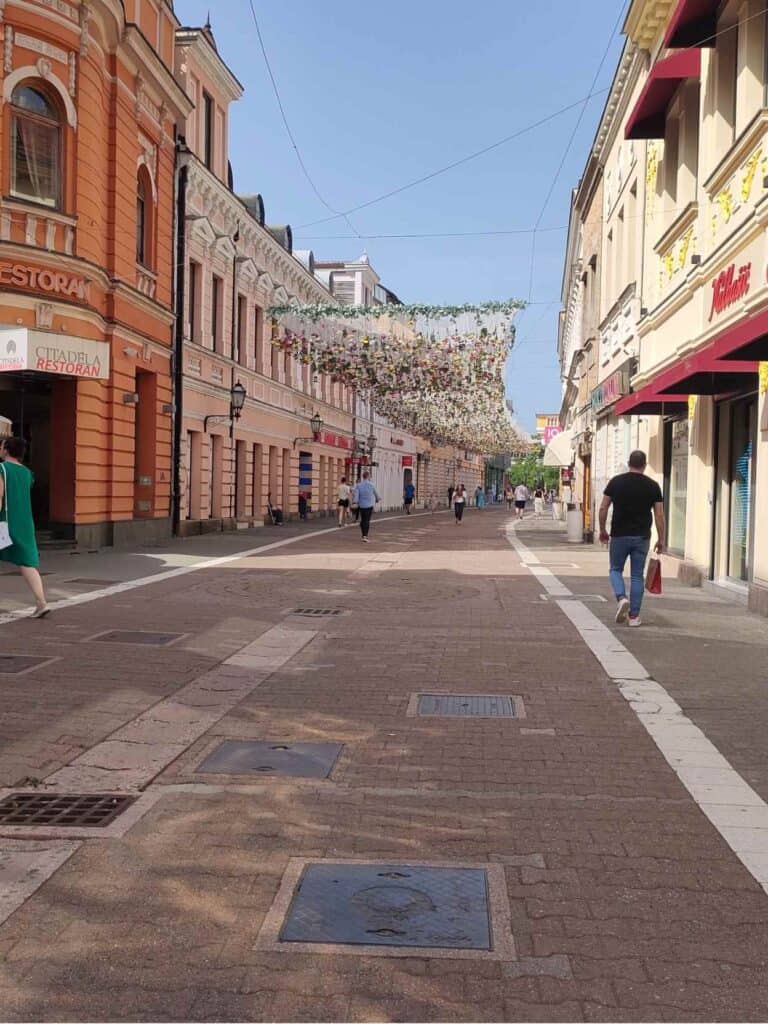
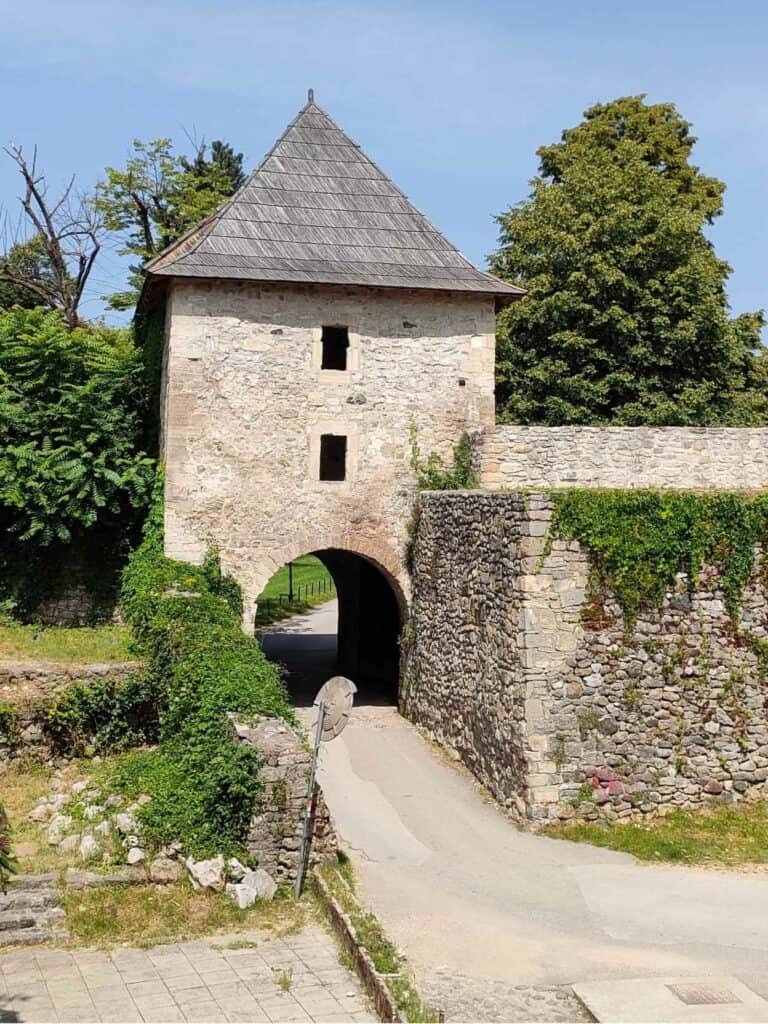
During WWII, the Axis troops occupied Banja Luka, and it became part of the Independent State of Croatia, a Nazi puppet state, while Serbs and Jews were deported to concentration camps in masses. The Ustaše ultranationalist and fascist organization killed more than 2000 Serbs, and the Orthodox Church of the Holy Trinity (today Christ the Saviour Orthodox Church) fell victim.
In 1969, a severe earthquake destroyed 80% of the city. In 1993, local Serbs blew up all 16 mosques in the city during the Bosnian war, including the famous Ferhat Pasha or Ferhadija mosque. The fortress at the Vrbas River from the 16th century is the oldest structure in the city, from where you get a nice view of the Vrbas river flowing behind.
The war completely changed its demographics. Tens of thousands of Serbs expelled from their homes in Croat and Bosniak-dominated regions settled in Banja Luka. At the same time, only some Bosniaks and Croats are left in the city. It is true for most cities in Bosnia and Herzegovina, and after the war, the former multiethnic cities became ethnically homogeneous.
Parallel to the main street Kralja Petra named after a Serbian hero who led the first insurrection against the Turks, Veselina Masleše is the main pedestrian street near Banja Luka, with attractive buildings, shops, and restaurants is the center of social life. The “Gentleman’s Street (Gospodska), as locals call it, is a great place to eat or drink something.
Ferhadija mosque
The original mosque commissioned by the Ottoman general and statesman Ferhad Pasha Sokolović was UNESCO World Heritage. Three mausoleums also belonged to the mosque, one of them that of Ferhad Pasha Sokolović himself. In the middle of the courtyard stood the ablution fountain.
A legend is that the general locked the mason in the minaret to ensure he would not construct anything beautiful like the Ferhadija mosque.
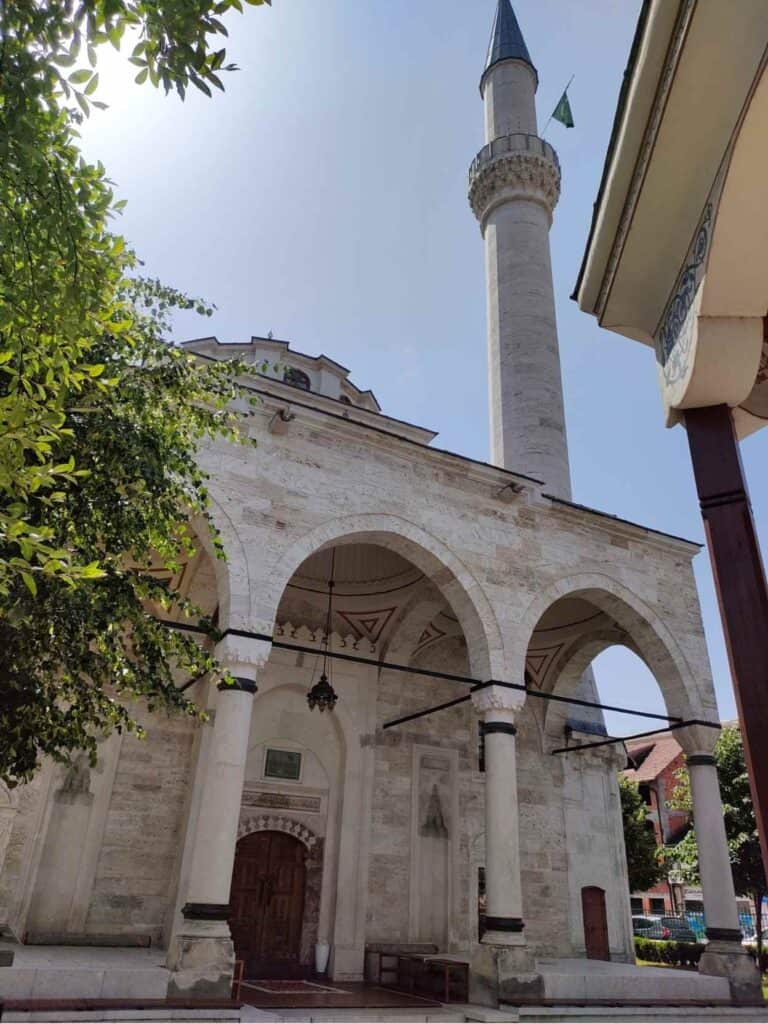
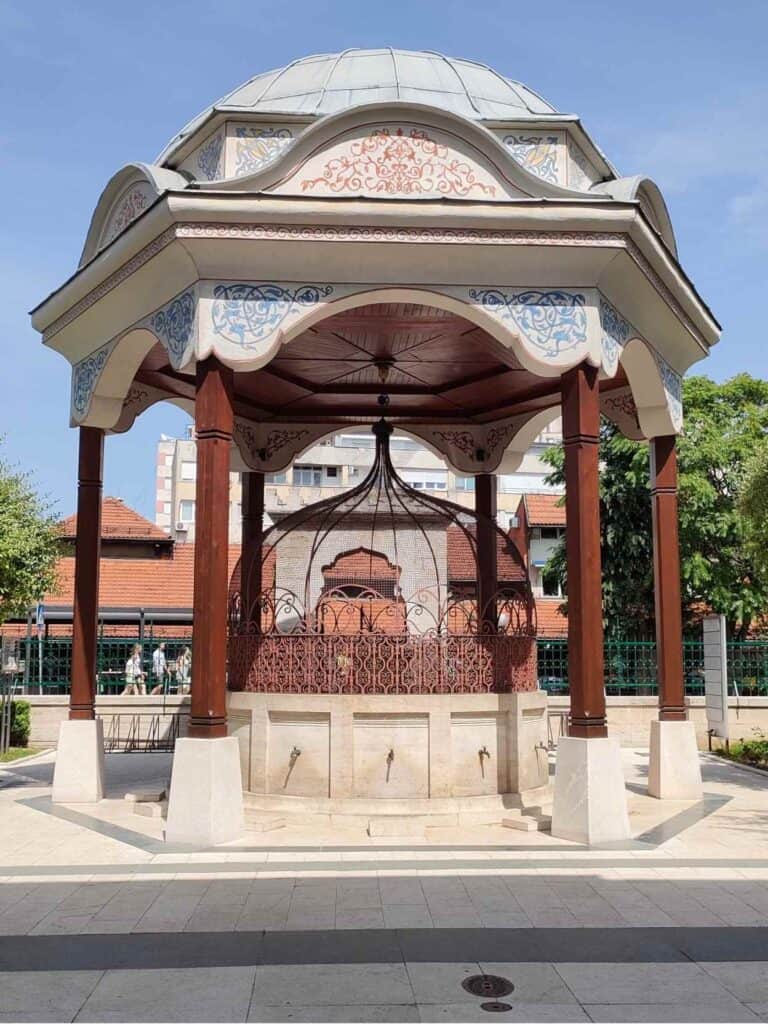
The mosque was destroyed on the night of 6th to 7th 1993 during the Bosnian war as one of the 16 mosques of the Banja Luka. It was razed to the ground and converted into a parking lot. The Serbs crushed its stones with the oriental details and took them to a secret dump site.
Its reconstruction was approved, but the ceremony of laying the cornerstone exactly eight years after the destruction was violently disrupted. For that, 8th November was later chosen as Bosnia and Herzegovina’s official Day of the Mosques. It finally came to the opening on 7th November 2016 and was one of the last mosques to be rebuilt after the war.
Cathedral of Christ the Saviour (former Holy Trinity Church)
Like Ferhadija mosque, this is a reconstruction of the original Orthodox church built during the 1920s. German troops damaged it during WWII, but the Ustashas (the Croatian fascist and ultranationalist organization) ordered the Serbs, Jews, and Romas to demolish it. During the Yugoslav regime, it was left in ruins for decades, and once it got permission in 1993 during the Bosnian war, there was already a Church bearing the same name. It is because there was no hope that the original can be rebuilt.
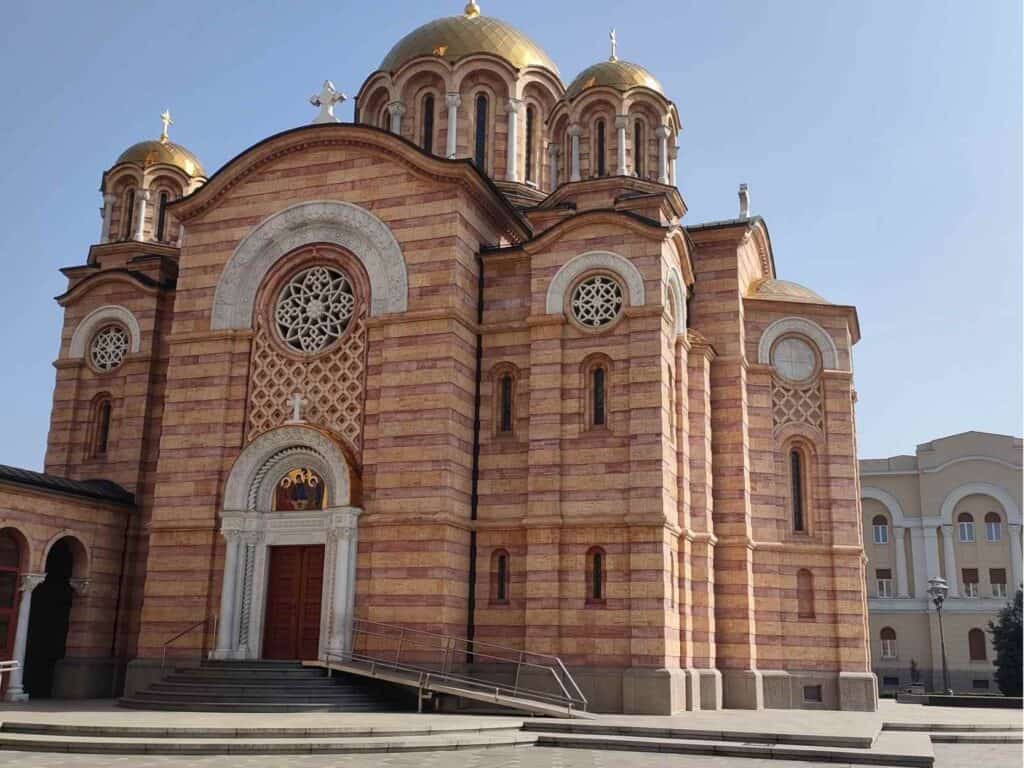
So they named it the Cathedral of Christ the Saviour and opened only in 2009. Tens of thousands of believers were present during the first sermon. It is only a short walk from the Ferhadija mosque along Kralja Petra. The orthodox church follows a mixed Ottoman and European architecture, and it has a unique red and yellow color due to the travertine from Mesopotamia.
It is the landmark of Banja Luka, one of the most beautiful orthodox churches in the Balkan, for which the city is already worth the visit.
Trappist Marija Zvijezda monastery
I had no time to go there personally, but the Trappist monastery (Mariastern Abbey) is something you must see in Banja Luca. A century ago, it was the biggest Trappist monastery in the world, the home of more than 200 monks; however, by now, it is the smallest, with only two monks living here. It played an active role in Banja Luka’s cultural life. They built the first private hydroelectric power plant, a brewery and produced the famous Trappist cheese, hence the region’s name Trappisti. The Trappist cheese is a semi-hard cow milk’s-cheese first made by the monks of the abbey of Port-au-Salut in France in the 18th century. The Cistercian Trappists brought the secret recipe to Banja Luka, and the tradition has existed since then. Cheese is very popular nowadays in Serbia, Hungary, and Bosnia and Herzegovina.
It has two parts: the Church of the Assumption of the Blessed Virgin Mary.
An interesting fact is that the monastery was built in only one year.
Museum of the Republika Srpska
The museum dedicated to the Bosnian Serb history and culture opened in the 1930s. Since then, it has changed names several times. When Bosnia-Herzegovina was part of the Independent State of Croatia, a puppet state of Nazi Germany during WWII, that museum was called the Croatian National Museum, and Croatian artifacts were added to the collection. Since 1992, it has been called the Museum of Republika Srpska. It accommodates an ethnographic collection and archeological artifacts, but the biggest part is about the Ustaša, the Croatian fascist and ultranationalist organization that was responsible for killing hundreds of thousands of Serbs, Jews, Romas as well as Croatian political dissidents during WWII and the Yugoslav Partisans.
I was interested to learn about the Bosnian Serb version of the art of the 1990s. However, this part is completely missing from the museum.
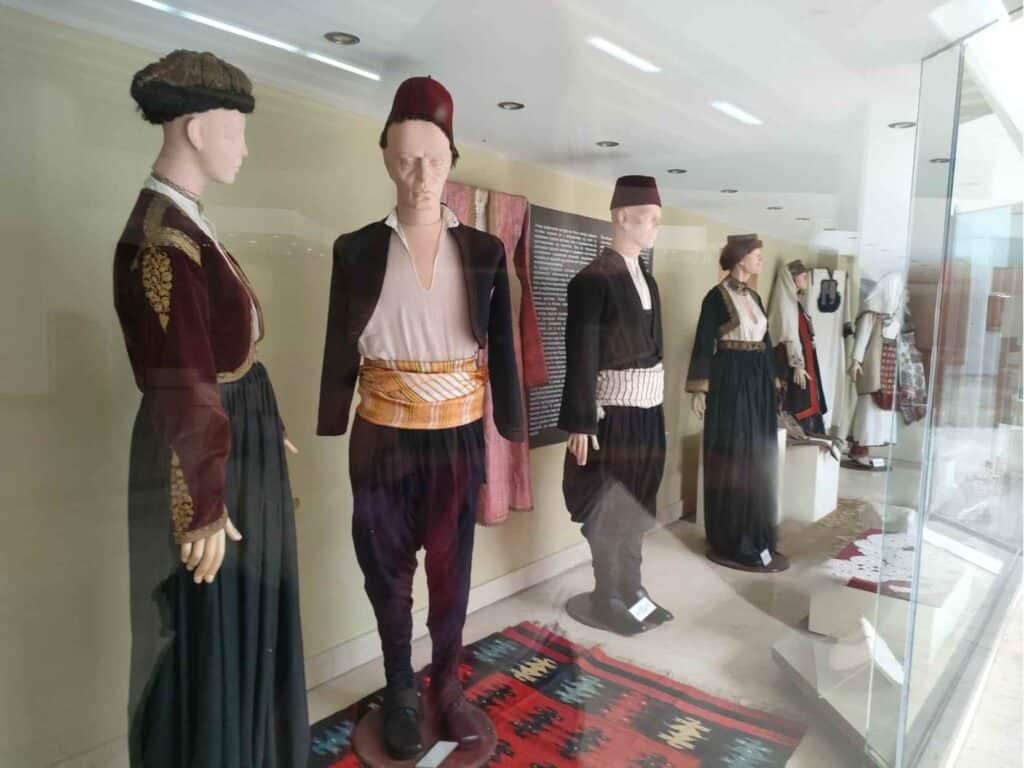
Take a Dajak on the Vrbas river in Banja Luka
Dajaks, the 7-9 meter-long unique wooden boat, has been used for a long time in Banja Luka to cross the river. Like gondolas in Venice, it is steered by a 4m stick with a metal tip on the end upstream. Each dajaks looks different as the decorations reflect the owner’s taste. During summer, plenty of dajaks are seen on the Vrbas river, a perfect way to enjoy the scenery.
Ramsko Lake
There are a couple of lakes in Bosnia and Herzegovina where you can enjoy a peaceful environment. Ramsko Lake is near the small town of Prozor, less than an hour’s drive from Jablanica.
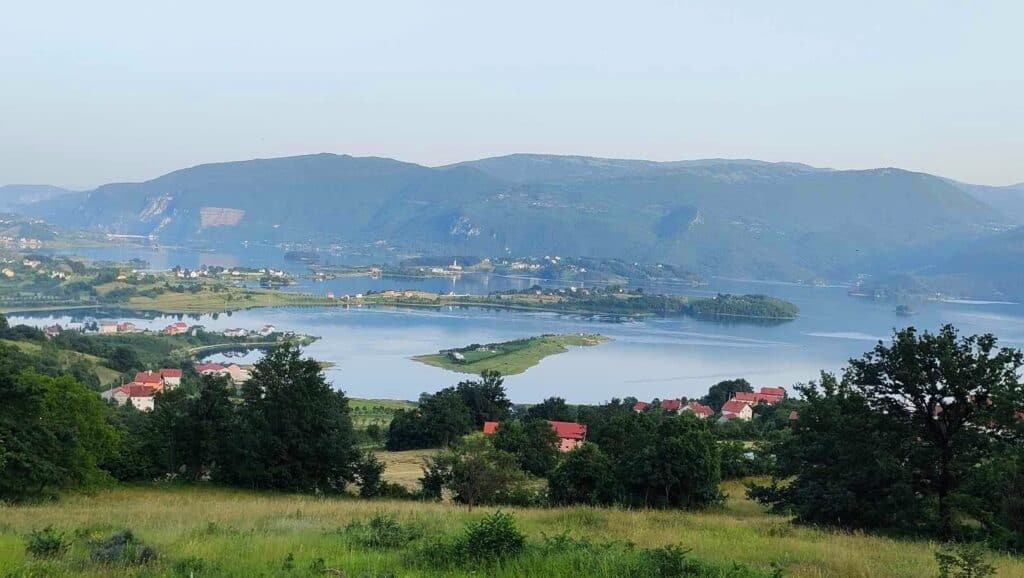
How to get there?
If you come by bus, first you need to arrive in Prozor. From there, you can get a taxi to the lake (20 KM). I asked the driver to take me to the peninsula with the church, the most picturesque part of the lake
There is a direct bus from Banja Luka, Jajce and Mostar. There are more regular buses from the nearest big city, Jablanica.
It is an artificial lake that was created when the dam was built in 1968. The inhabitants are mainly Catholic Croats in this area. It looks stunning with the peninsula, which offers water spots, nice walking trails, and a church.
Since the lake is surrounded by mountains, there are plenty of amazing viewpoints. It is more popular among locals, and I only met a few foreign tourists who came for hiking. There are a couple of places to stay, mainly in private apartments and two restaurants.
Where to stay at the Ramsko (Rama) lake?
I stayed in this guesthouse a few kilometers from the lake up on the hill with a fantastic view right from the balcony. There is also a small pool on the terrace. If you come with family, or even travel alone like me, it is a nice affordable place to stay at.
Close to the lake, a little up in the hills, this private house is a perfect place to watch the sunset over the lake. The house is modern, well-equipped, with a great location. It is a romantic place for couples or appreciated by families for its calm surroundings.
Trebinje
Trebinje is only 30 km from Dubrovnik, part of Republika Srpska in southern Bosnia and Herzegovina. It means that all street signs are in Cyrillic but don’t worry, everything is also indicated in English. It is still less known by tourists, despite being one of the most beautiful cities in the country. It belonged to the Serbian Empire and then the medieval Bosnian state under Tvrtko I in 1373. Like the rest of Herzegovina, the Ottoman Turks captured it in the 15th century.
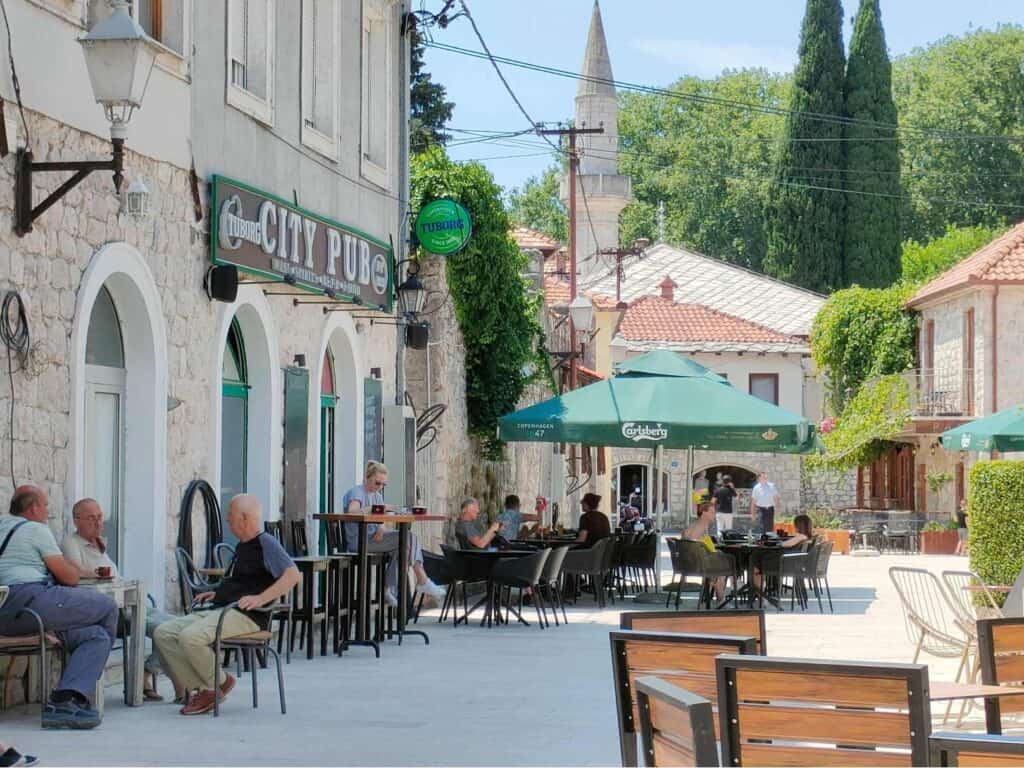
During the Bosnian war, Trebinje served as a military base for the Yugoslav People’s Army troops who besieged Dubrovnik. They razed the mosques during the war, and the Bosniak inhabitants were forced to join the Jugoslav People’s Army; if not, they risked execution, so many fled Trebinje.
The sunny region is an ideal place for wine production. There are several wine cellars in the area.
The road to Trebinje is amazing, especially the last part when passing by the Bileća lake and descending from the mountains to Trebinje.
How to get there?
Trebinje can be visited on a day trip from Mostar or Dubrovnik. You can take a bus from Mostar to Trebinje. It departs at 17:30; there is a bus at 4pm on certain days as well.
What to see in Trebinje?
The old town on the bank of the Trebišnjica river with cozy restaurants was built during the Ottoman period.
Close to the old town, the Jovan Dučić square is the most popular place to hang around for locals. It is a spacious, atmospheric square with many platan trees, occasionally a market, and café terraces around. Behind that is the park with the same name dotted with socialist realist sculptures
Trebinje is also called the city of the Platans and Sun.
Arslanagića Bridge, the most famous attraction in Trebinje.
The Ottomans built the bridge in 1574 (a few years earlier than the one in Višegrad), and it was an important place for the salt trade before the Dubrovnik road was built. It bears the name of a rich Ottoman administrator, Arslanaga, who collected toll money and lived close to the bridge.
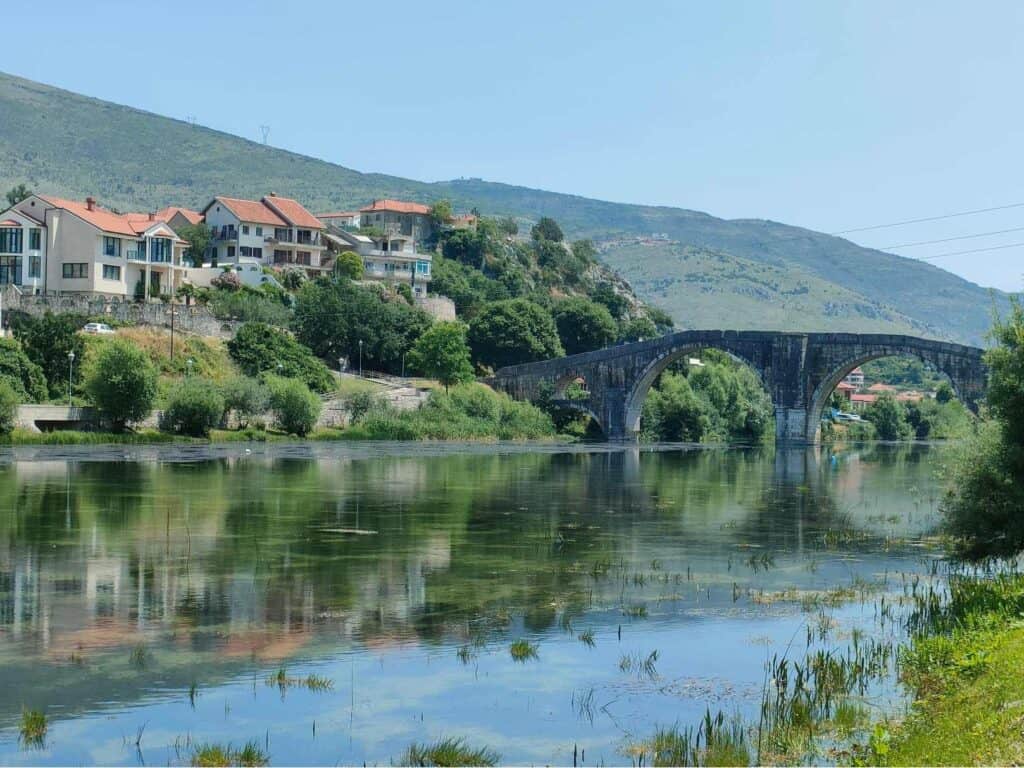
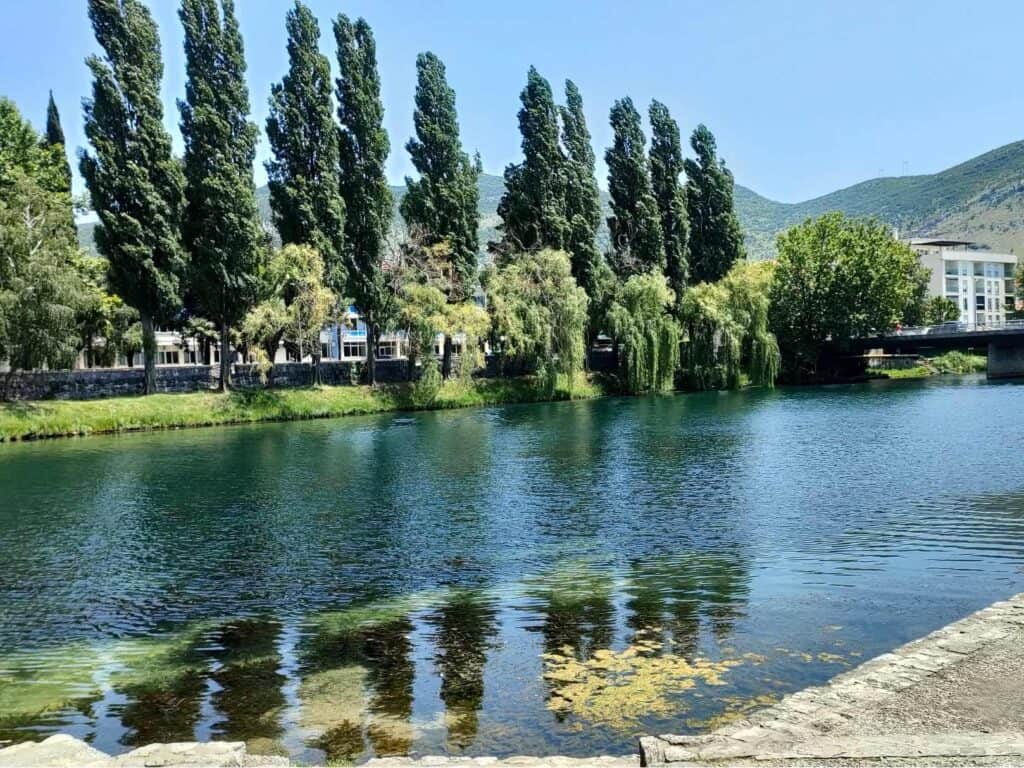
The bridge was flooded in 1965 when hydroelectric facilities were built on the Trebišnjica River. It was then dissembled, stone by stone, and left on a nearby field where it was abandoned for several years. In 1970, they moved the bridge to a new location, and each stone was numbered and transported. Two years later, the bridge was assembled on its present location.
From the foot of the bridge, a small path along the river takes you further to the city center. Some watermills are also on the way.
Hercegovačka Gračanica
The new Orthodox monastery completed in 2000 stands on top of a hill that you can see from many points of the city. This beautiful church is another must-see in Trebinje, and you will be impressed by the rich, colorful interior fresco decoration if you haven’t seen an orthodox church before. It was built on the model of the Gračanica monastery in Kosovo, a sacred monument for the Serbs. Inside are the bones of Jovan Dučić, a poet and diplomat born in Trebinje, who died in America in 1943. His nationalist words made him a hero among the Serbs
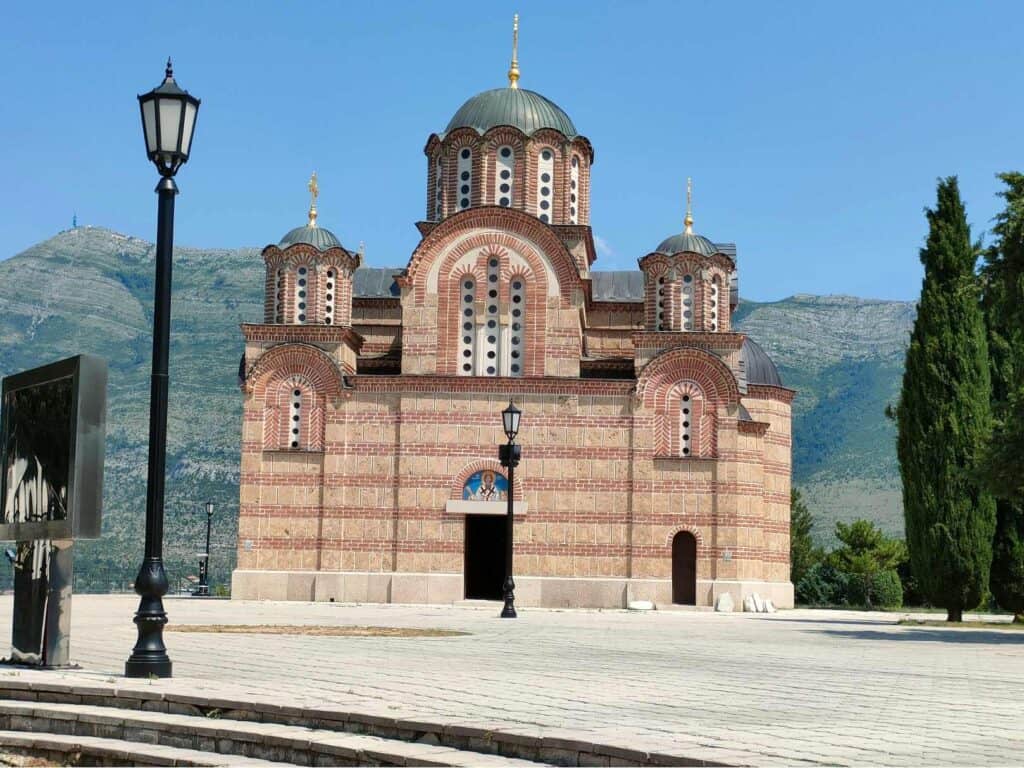
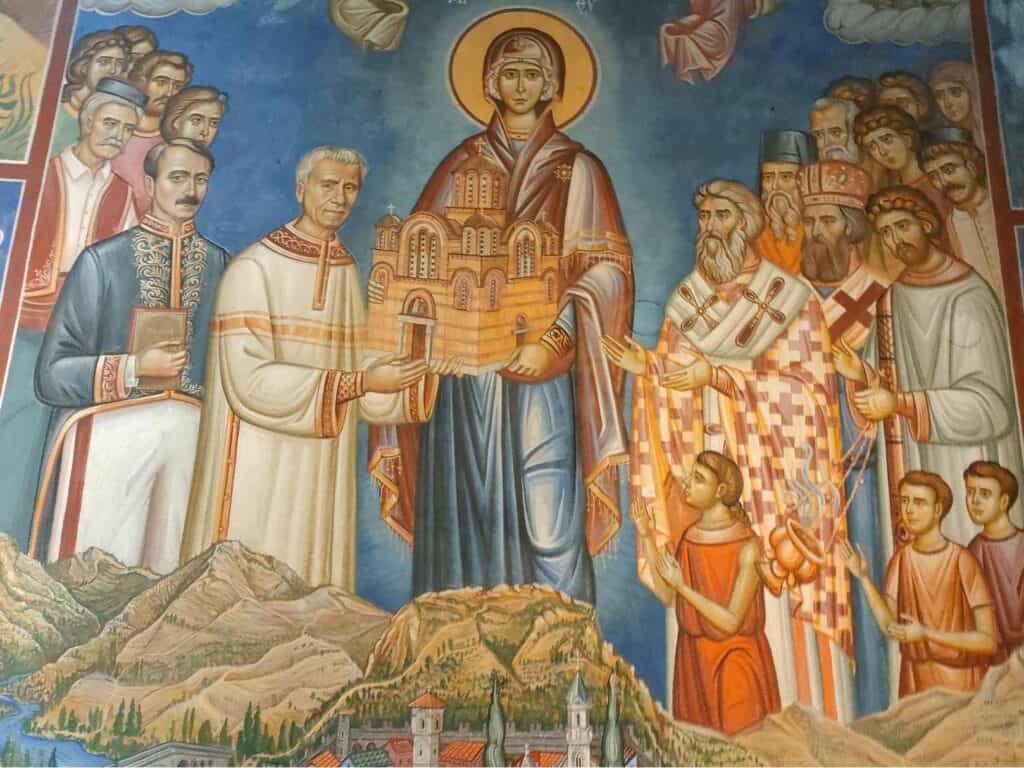
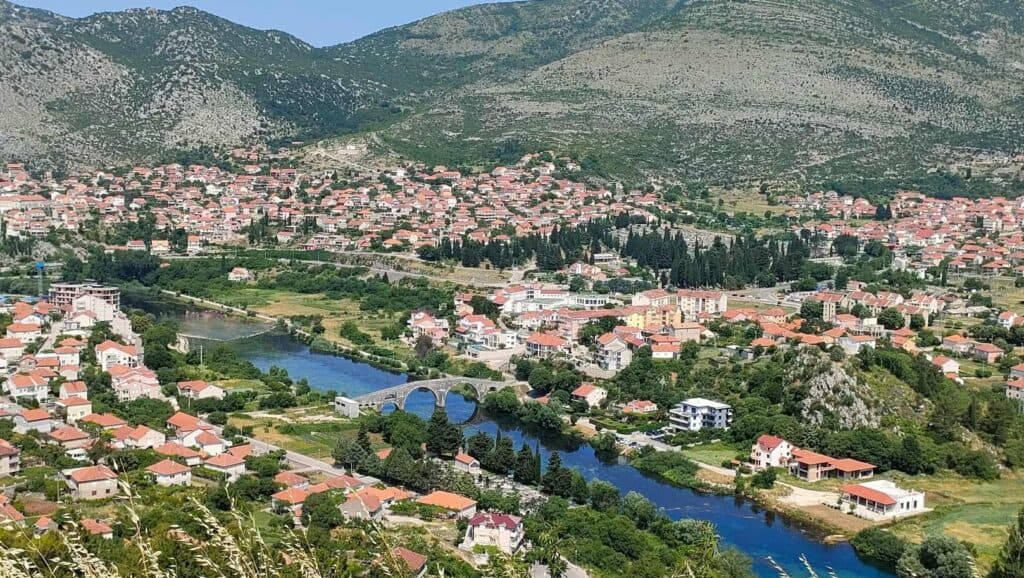
Tvrdoš Orthodox Monastery and wine cellar
There are a couple of monasteries, but the Tvrdoš, only 5 km from Trebinje, is the most popular among visitors. The monastery dating to the 15th century is also famous for wine production, and tourists can see a wine cellar with massive old barrels. At the beginning of the path leading to the monastery, you will get a blue cloth to wrap around your body even if you are properly dressed, and you need to cover your head with a scarf.
Where to sleep in Trebinje?
Trebinje is quite hilly, so if you do not want to take steep roads, book your accommodation in the center.
Low-budget
Apartmani Bridge 9.8
Mid-range
Apartmani Vila Kosa (booking.com review 9.5): modern apartment with perfect location
Apartmani MG (booking.com review 9.8)
Villa Marija (booking.com review 9.1)
Prestige (booking.com review 9.8): a modern 3-bedroom and living room apartment with a balcony in the center.
City apartments (booking.com review 9.7)
Studio – apartmani Brvnare (booking.com review 9.7)
This is a small wooden house basically in the city center with a garden to relax. It is a special place ideal for couples.
Neum, the only coastal city of Bosnia-Herzegovina
It may come as a surprise that BiH has a short, 20 km-long coastline at the Adriatic Sea. To the north and the south is Croatia. Until recently, the only way to the south of Croatia led through Bosnia and Herzegovina. However, in July 2022, the construction of the Pelješac Bridge was completed, which completely avoids the Bosnian enclave, and there is no need to waste time at border crossings for those not intending to stop in Bosnia. It has become especially useful since Croatia has been part of the Schengen area since 1st January 2023.
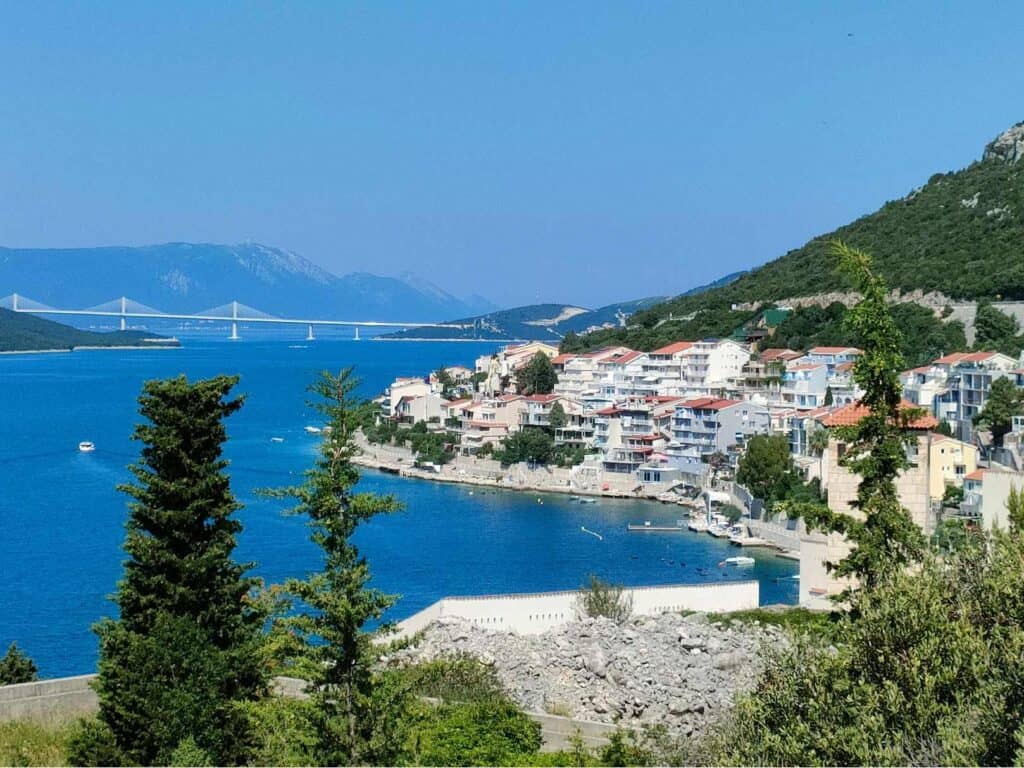
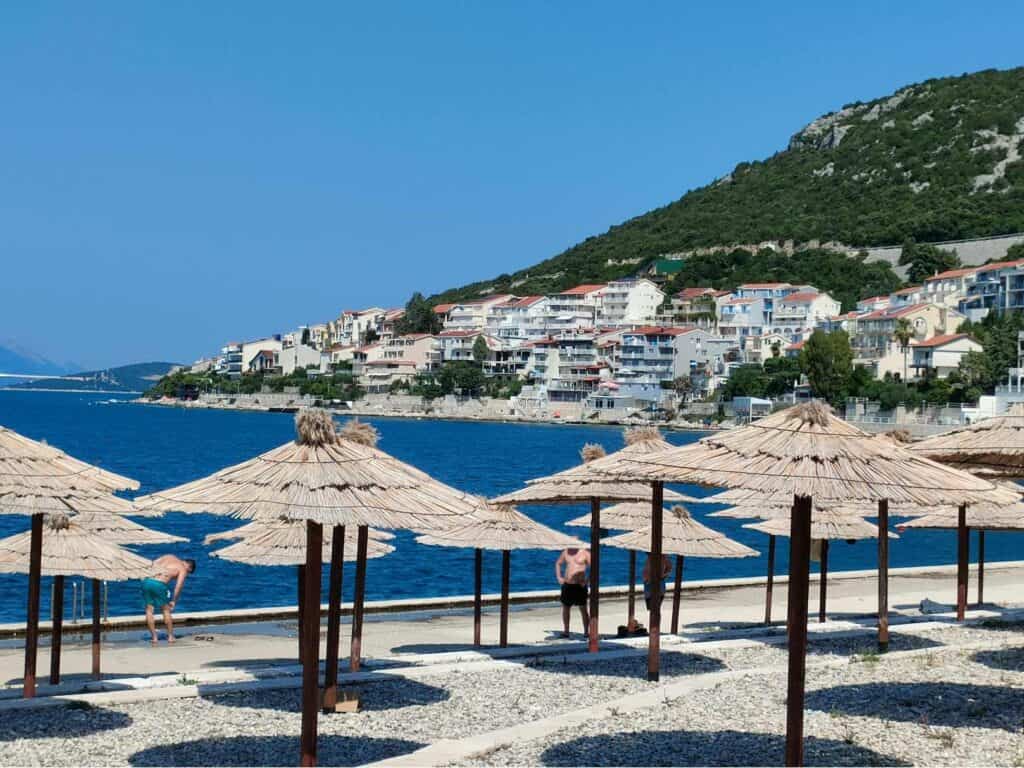
Many Croatians come over, especially because prices are much lower than in Croatia. Neum is the only city along the coast with beaches that are as beautiful as in the much more popular neighboring country.
If you only travel around Bosnia and Herzegovina, it can be interesting to spend a day at the beach.
Neum has no tourist attractions or a nice downtown; it is all about the beach and swimming. Like in Croatie beaches are stony. You can take the path along the coast. You will see from several points the newly built bridge linking the different parts of Croatia. The most picturesque part of the coast you often see in the photos is the stretch between Hotel Zenit and Hotel Novum.
However, I walked along the coast in the other direction as well, and Neum Becah is also lively, with a small harbor for boats.
How to get to Neum?
By car: From Mostar, you can get to Neum in one and a half hours.
By bus: Buses between Dubrovnik and Mostar pass by Neum. I took a bus at 7 am from Mostar, and the bus departed from Neum back to Mostar at 5.30pm. The journey took almost 2 hours.
The return ticket costs 28KM (14 EUR).
Where to stay in Neum?
Low budget
Only 50 meters from the beach, this simple, clean guesthouse has a garden where a barbecue stays at the guests’ disposal.
High end
Guest House Villa Maslina Neum (booking.com 9.7)
Srebrenica – Potočari memorial site
On the 11th of July 1995, Bosnian Serb troops executed more than 8,000 Bosnian Muslim men and boys over the age of 12 in Srebrenica, considered the largest massacre since World War II, and the UN peacekeepers watched all this passively.
Between Batrunac and Srebrenica, opposite the former UN safety zone, the Potočari memorial site was inaugurated in 2002 in the presence of Bill Clinton. That time 600 victims were buried, and since then, the newly identified ones every year on the anniversary, the 11th of July.
Today, there are endless rows of white headstones, the number of which is increasing.
But why did I indicate it among the essential sights of Bosnia and Herzegovina?
Traveling is about learning. If you fully want to immerse yourself in the local culture, don’t just look at what is “beautiful” in the photos but also what is essential to the locals.
One-day programs are organized from Sarajevo to Srebrenica, almost 3 hours away. This is the best way to learn about the events in Srebrenica through personal stories and the guide’s explanation.
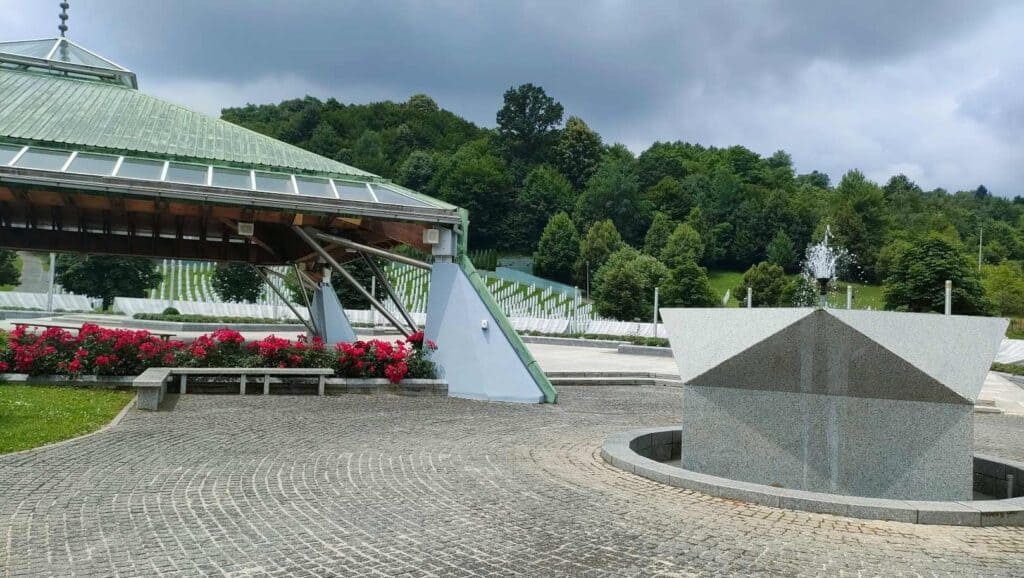
In 1992, Bosnians welcomed the peacekeepers as saviors at the beginning of the war, but they soon realized that they would not protect them. The UN sent food, medicine, and peacekeepers for a long time but did not intervene directly in the conflict. However, when ethnic cleansing spread across the country, the UN established safe zones for civilians, primarily Bosniaks, fleeing the war. At one point, the Serbs controlled 70% of the country. Still, they wanted the entire territory of the country, so they targeted the safety zones, which is how they marched into Srebrenica without resistance, even today, inexplicably.
Then they rounded up thousands of men and boys, separated them from their families, and executed them by firing squad.
Many fled into the forest, but the Serbs ordered Ramo Osmanovic, a Bosniak man, to call his son, Nermin, and all those hiding in the woods and promised they wouldn’t be hurt if they surrendered. It was a trap. Those who left were executed, including his son, Nermin, and himself. The Serbs filmed it all. The “Nermin Come statue” stands in Sarajevo and commemorates the victims of Srebrenica.
Those who survived marched for five days toward the free zone.
They were placed in primary, secondary, and tertiary mass graves, then collected with grabbers, and the remains were transferred to another grave to make the traces of the crime disappear. Because of this, the bodies were mutilated, and some had their bones found in five places. The survivors were taken to refugee accommodation in Tuzlá, awaiting news.
I remember when our tour guide in Sarajevo explained that many people could not get over the war even after almost 30 years. “How can those still waiting for the news that the bones of their husbands and children have been found and that someone has lost six children in the tragedy get over what happened…”
How to get to Srebrenica by bus?
The bus from the East Station leaves at 8:40 and returns at 16:30. However, this bus was rescheduled and departed 20 minutes earlier, so be there on time.
You can take the bus from the stop between the memorial and Srebrenica, which is a short walk, or find transport to Batrunac (which takes 5 minutes), where the bus station is in the center of the town.
Other articles about Bosnia and Herzegovina
Sarajevo itinerary one day, 2 days and 3 days
The most practical way to explore the country is by car since the bus and train network is less extensive and regular, especially between Republika Srpska and the Federation of Bosnia and Herzegovina. After the popular Mostar and Sarajevo, many people rush to the Croatian coast, even though there are so many attractions in Bosnia alone that you can easily spend up to two weeks. Although there is also a small stretch of beach with the town of Neum, Croatia is a better choice if you plan a beach holiday.
As you can see, you can spend at least a week here; there is so much to see. Bosnia and Herzegovina is also a rafting paradise, which you can try on the Neretva, Vrbas and Una rivers. One of the most complicated countries in Europe is an especially educative destination.

